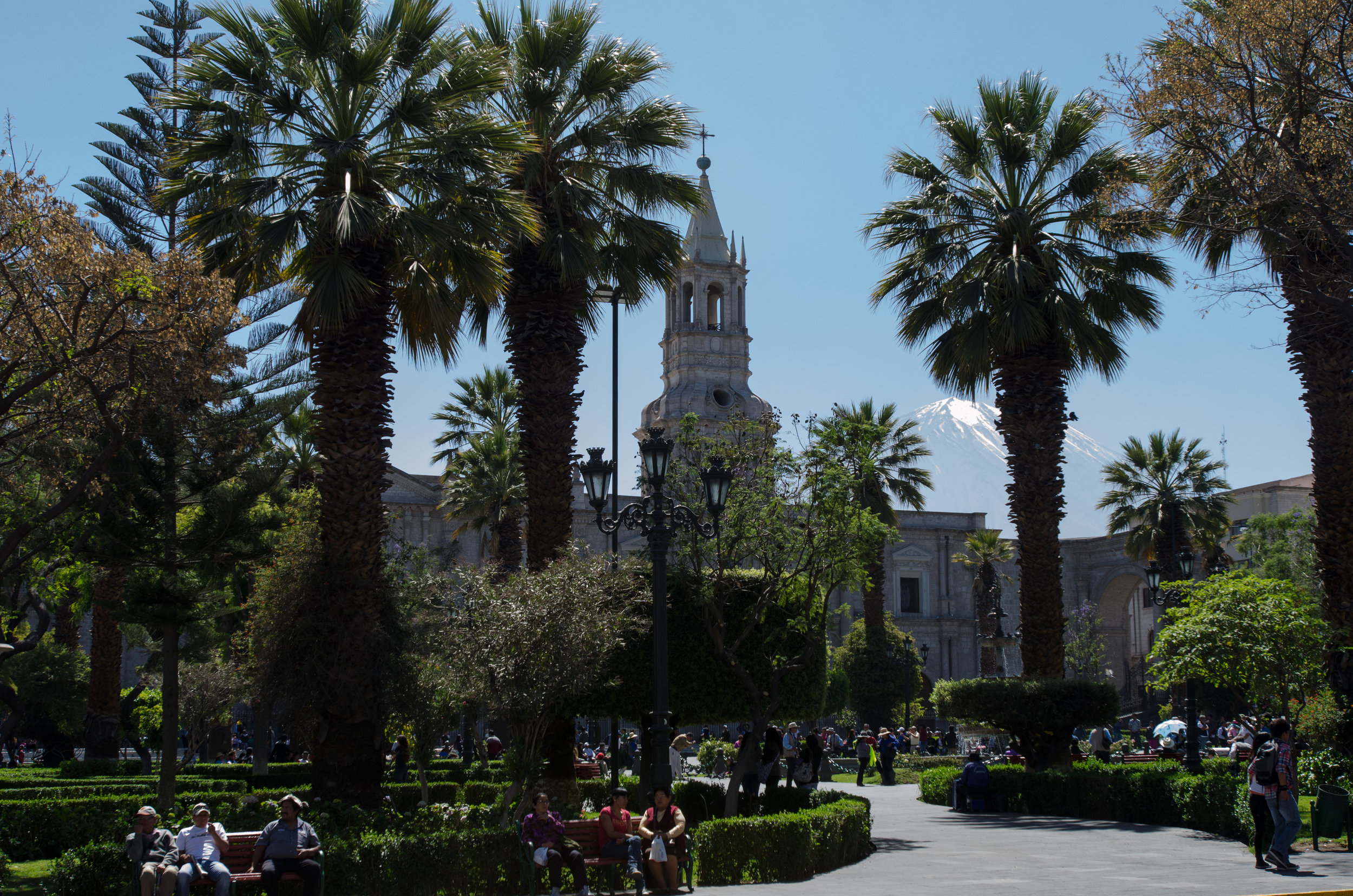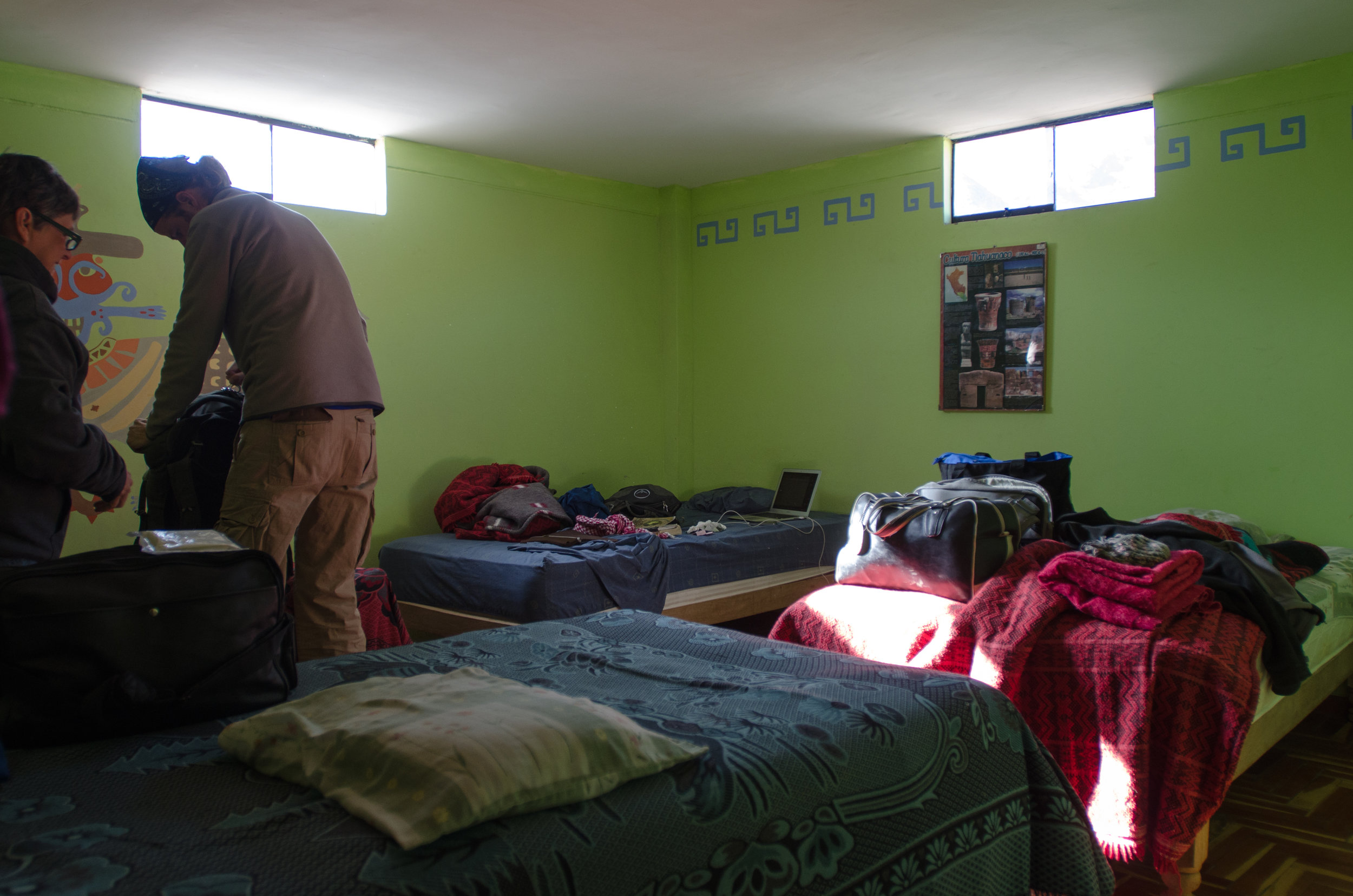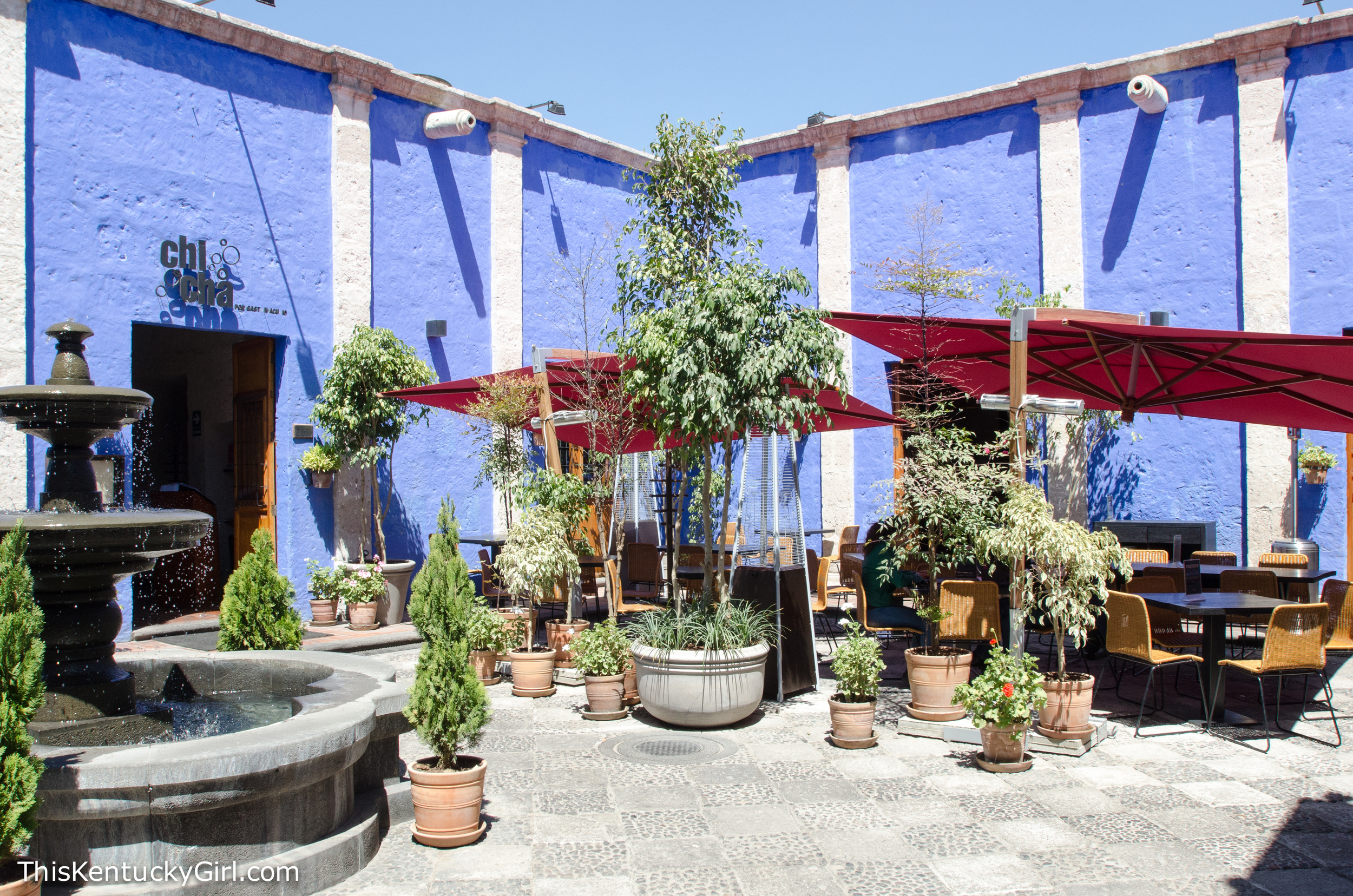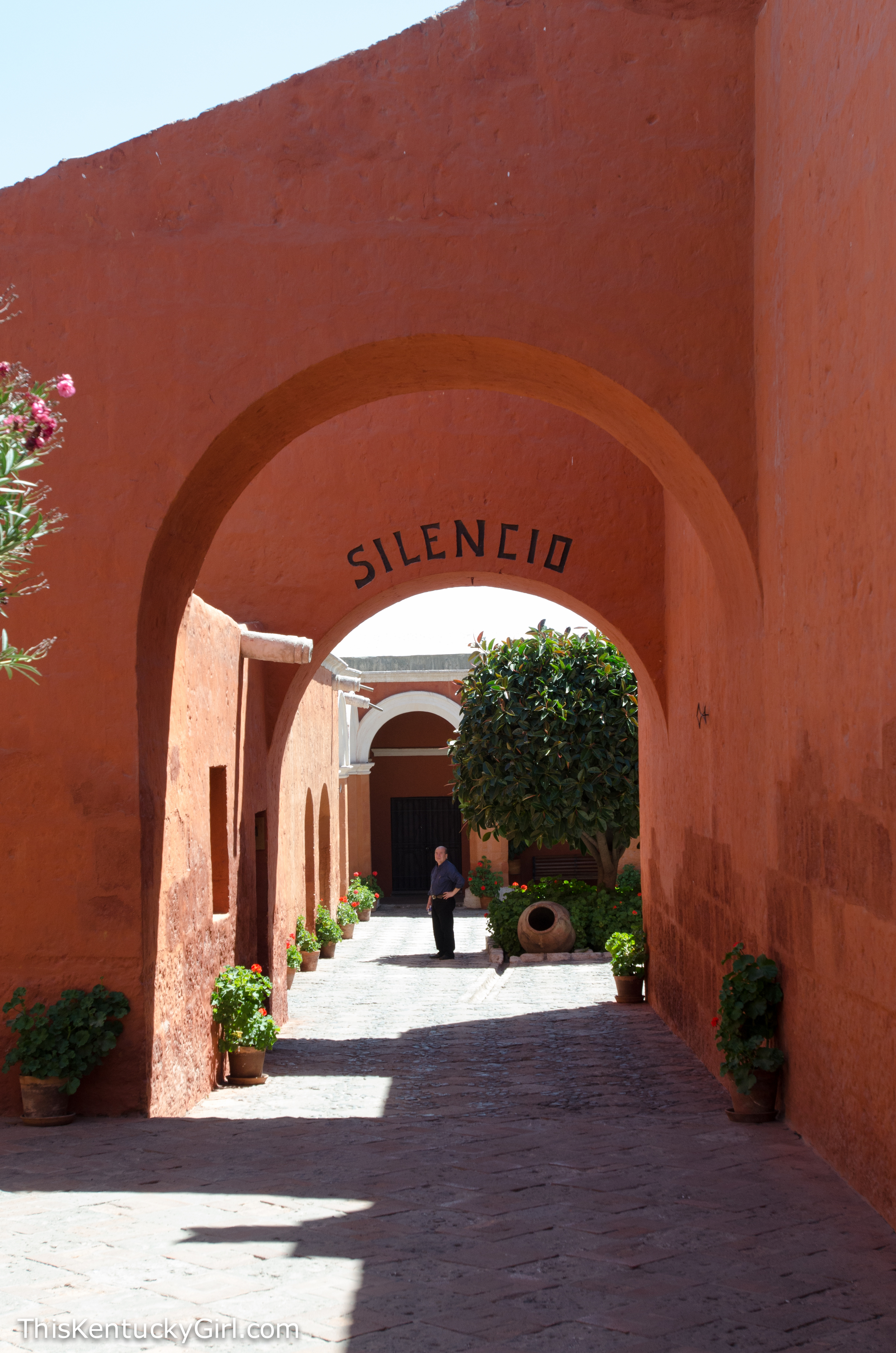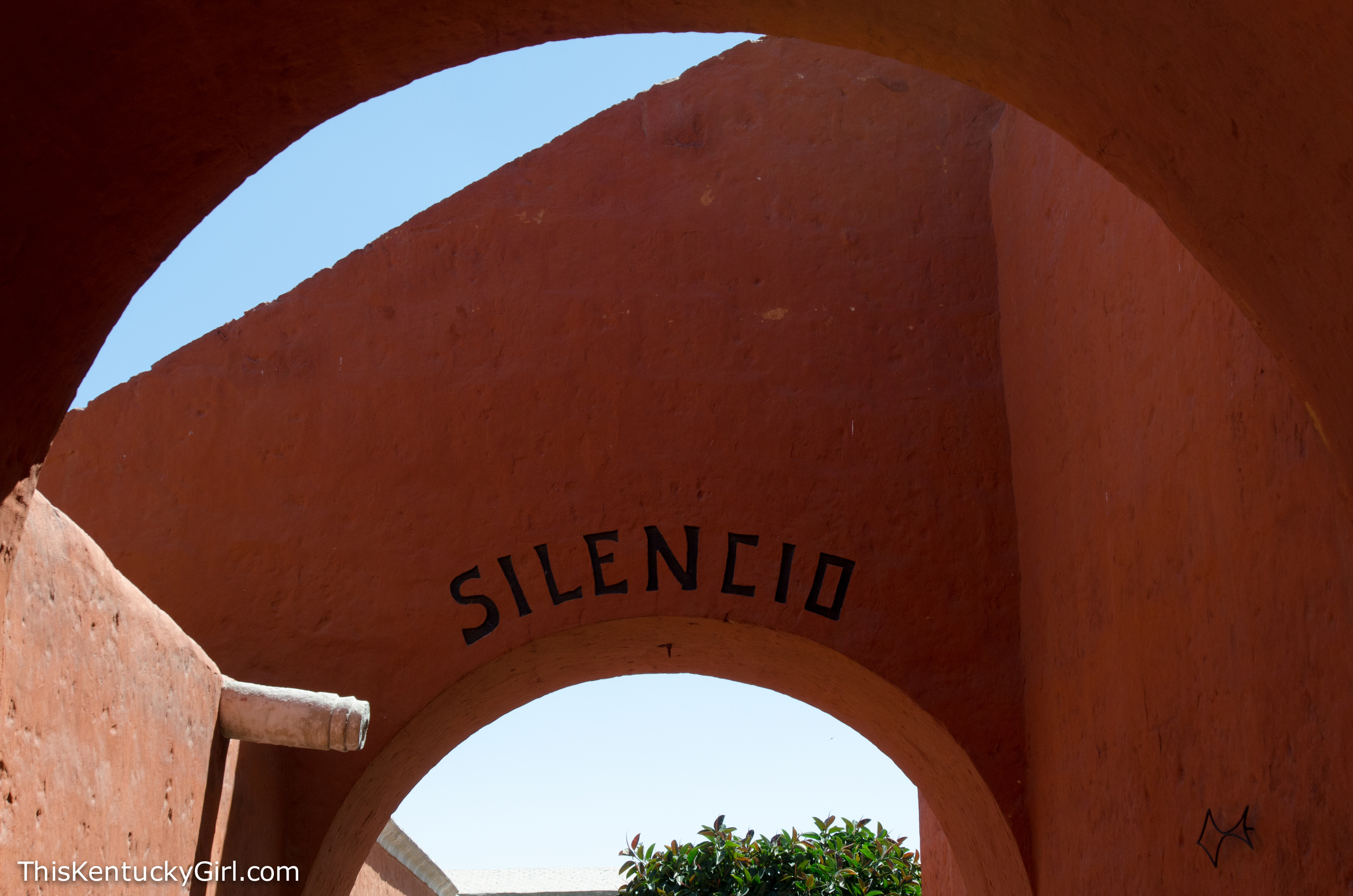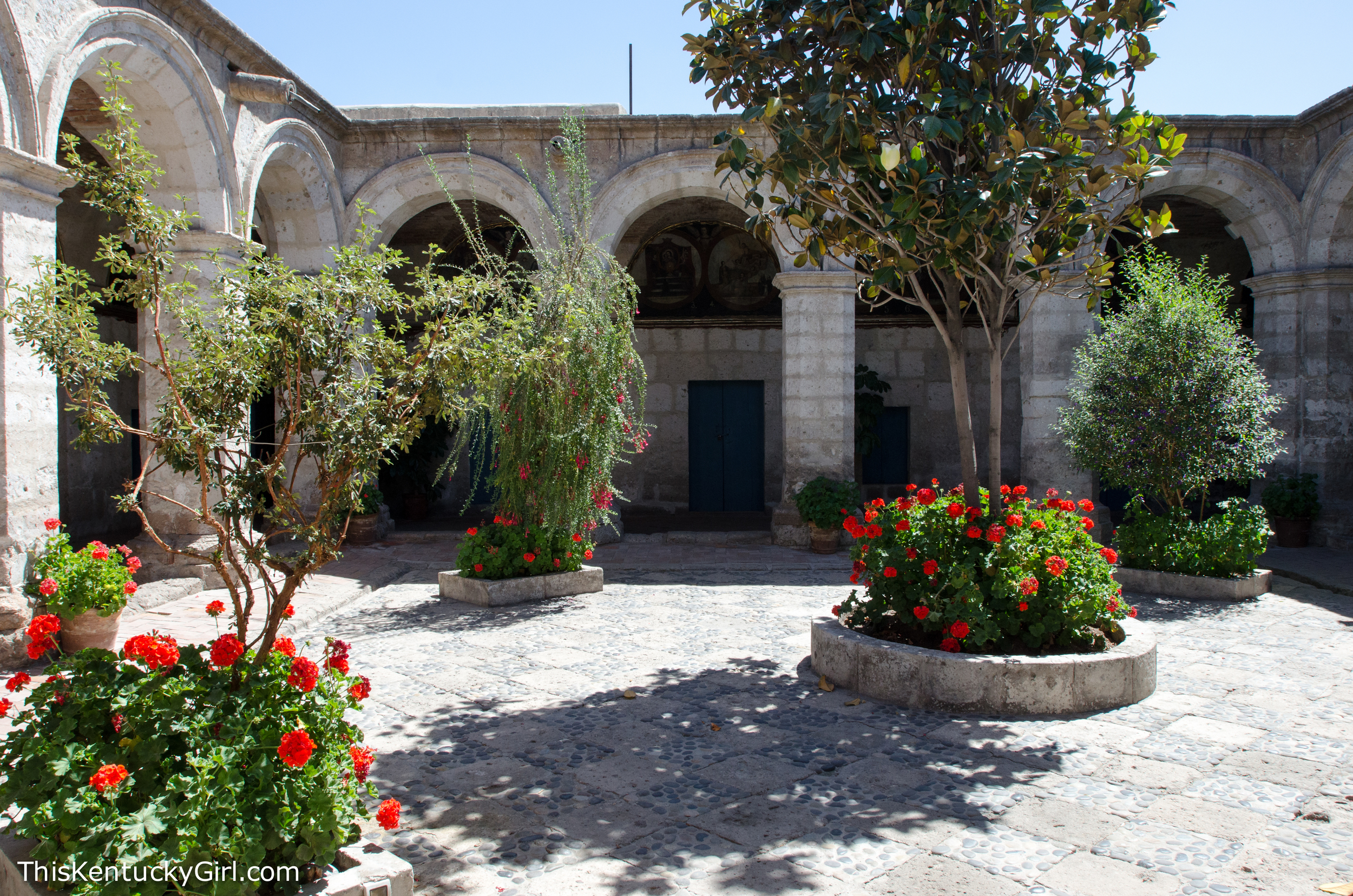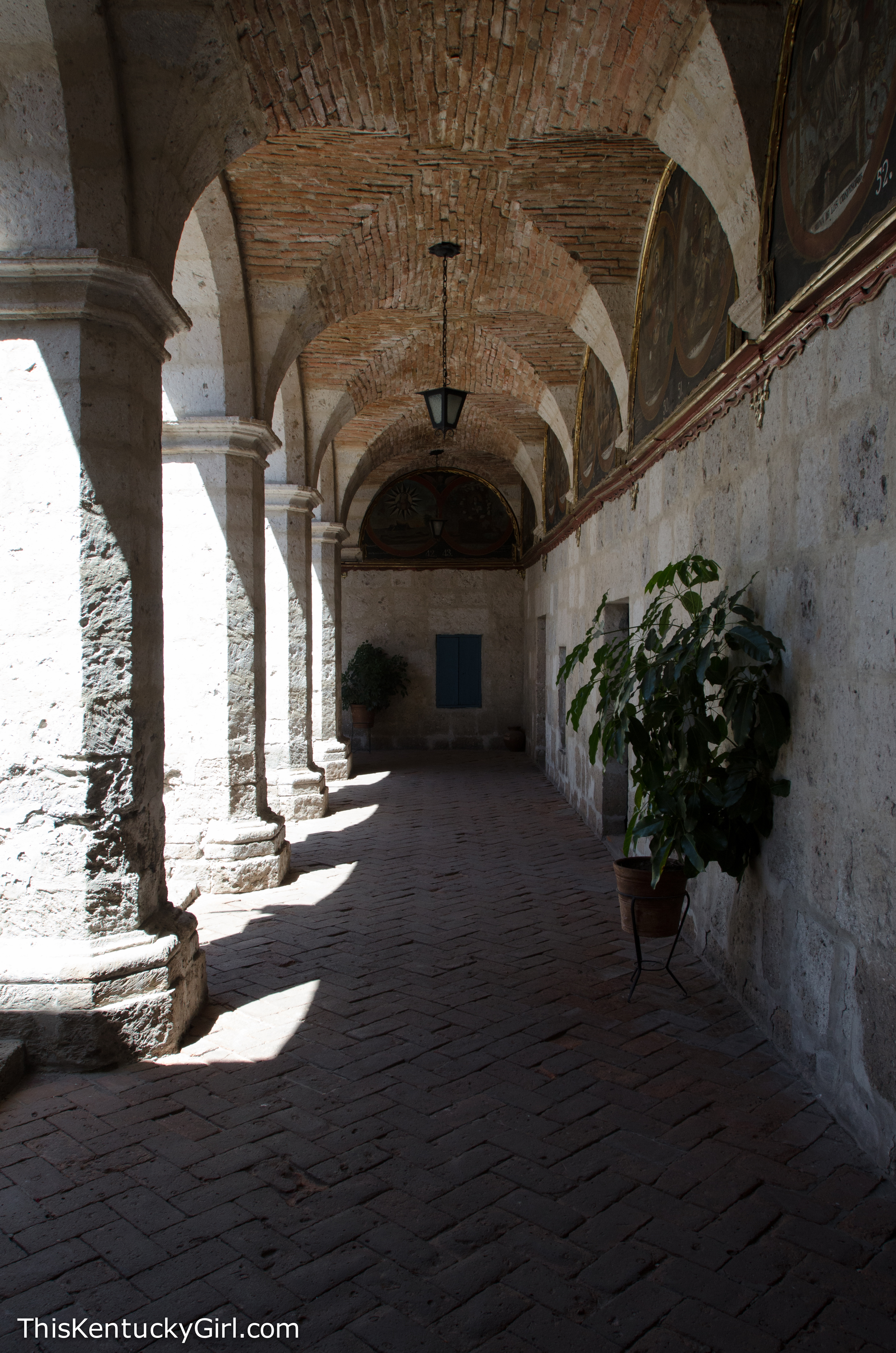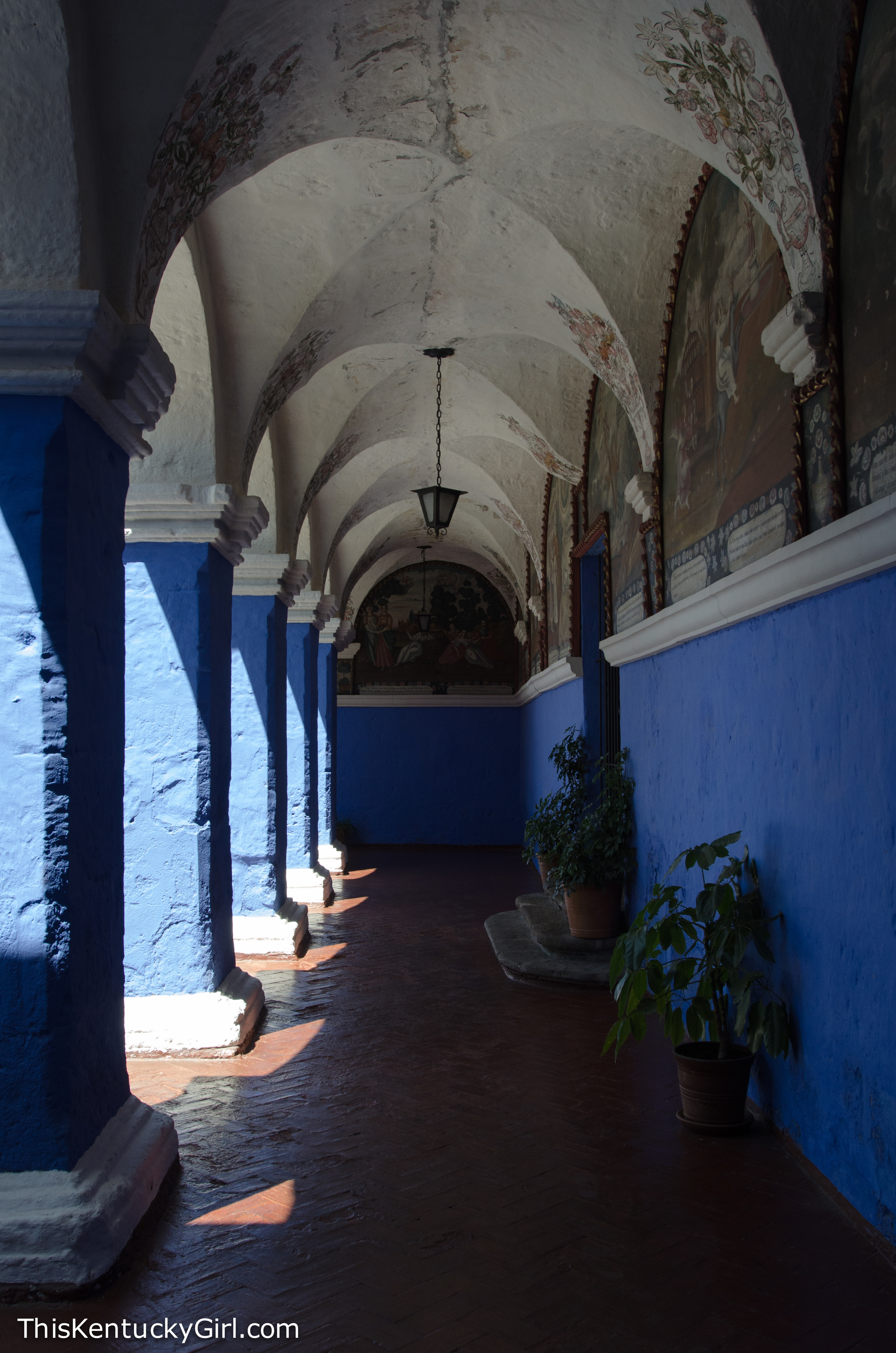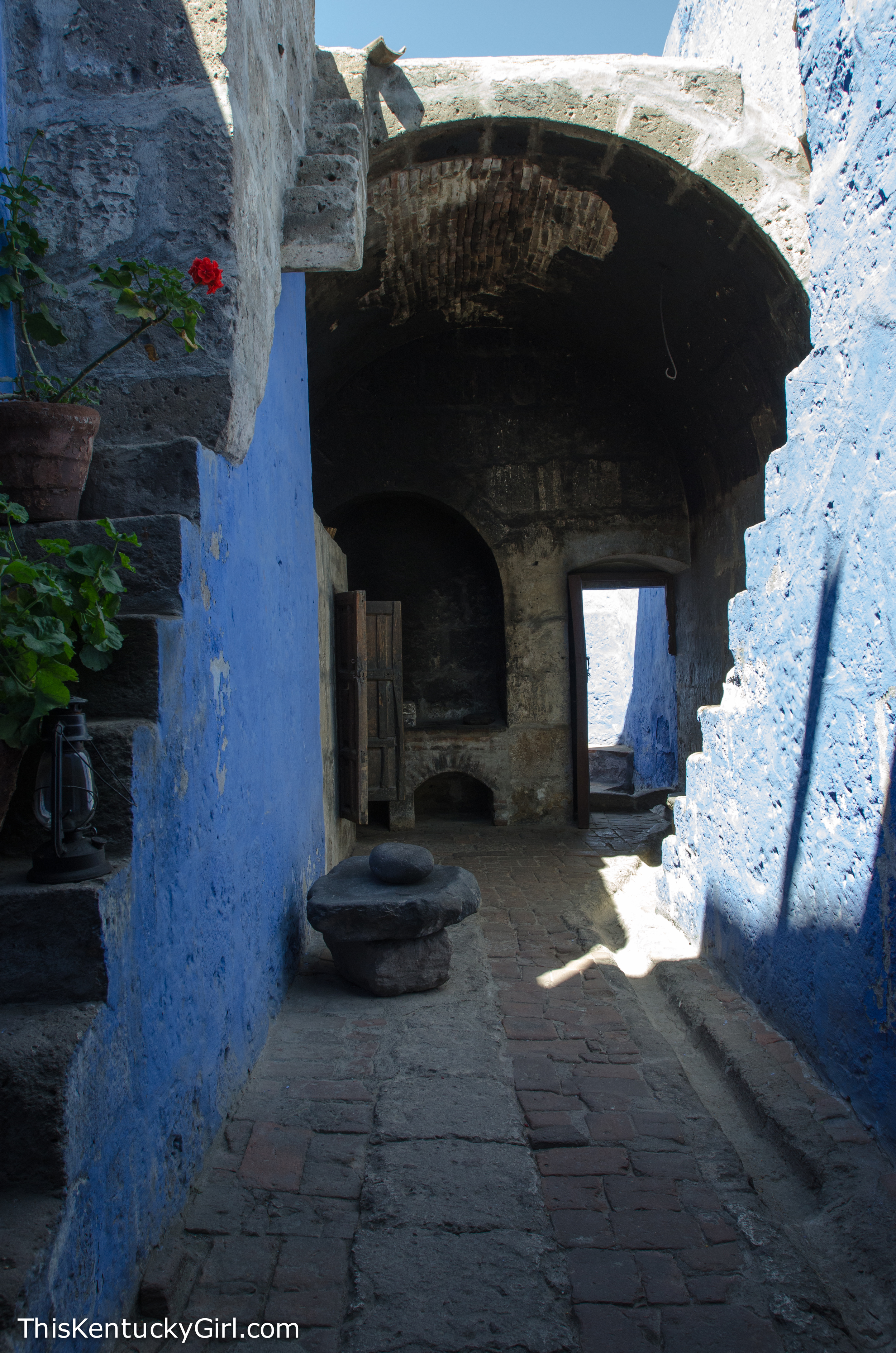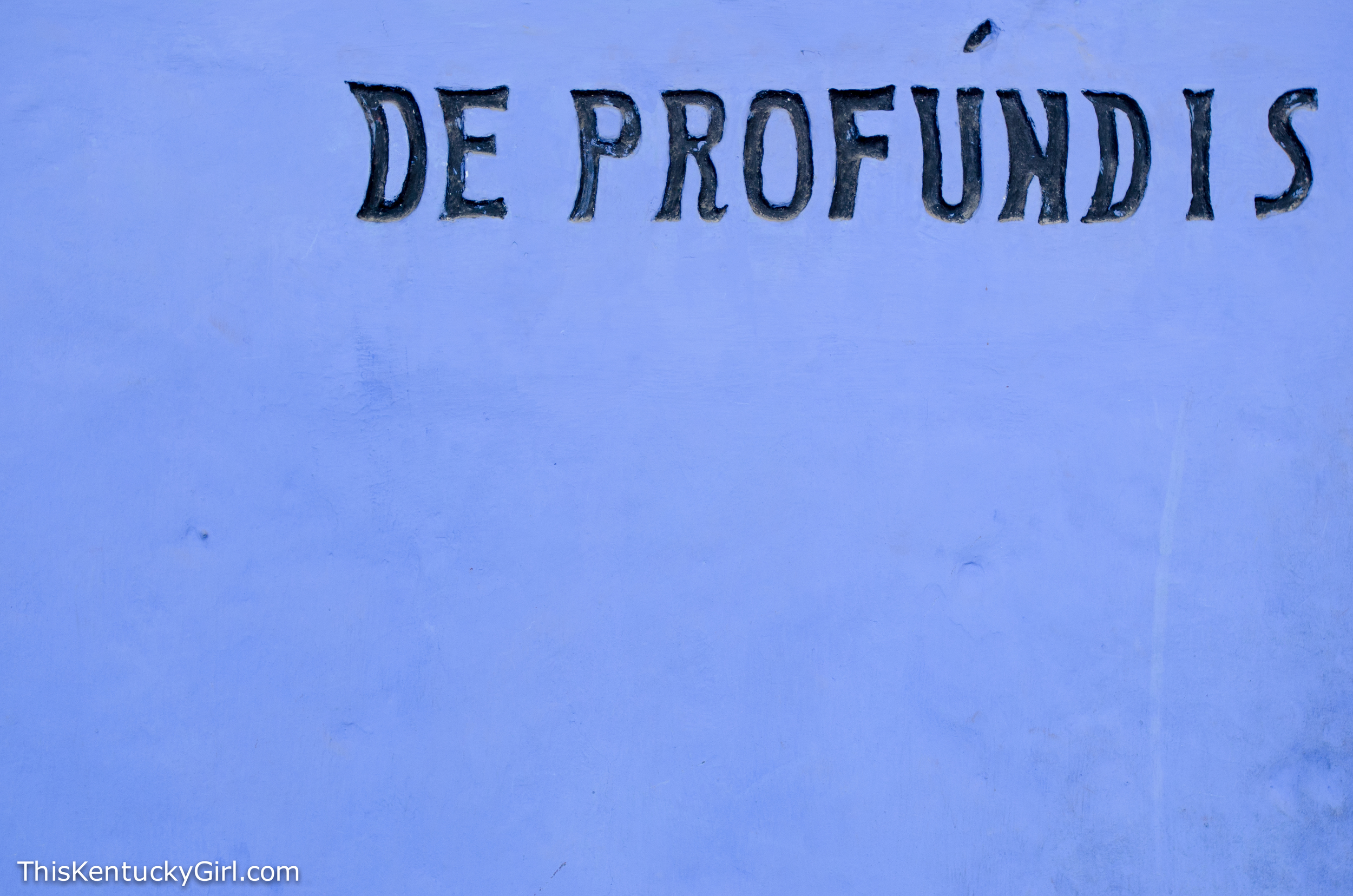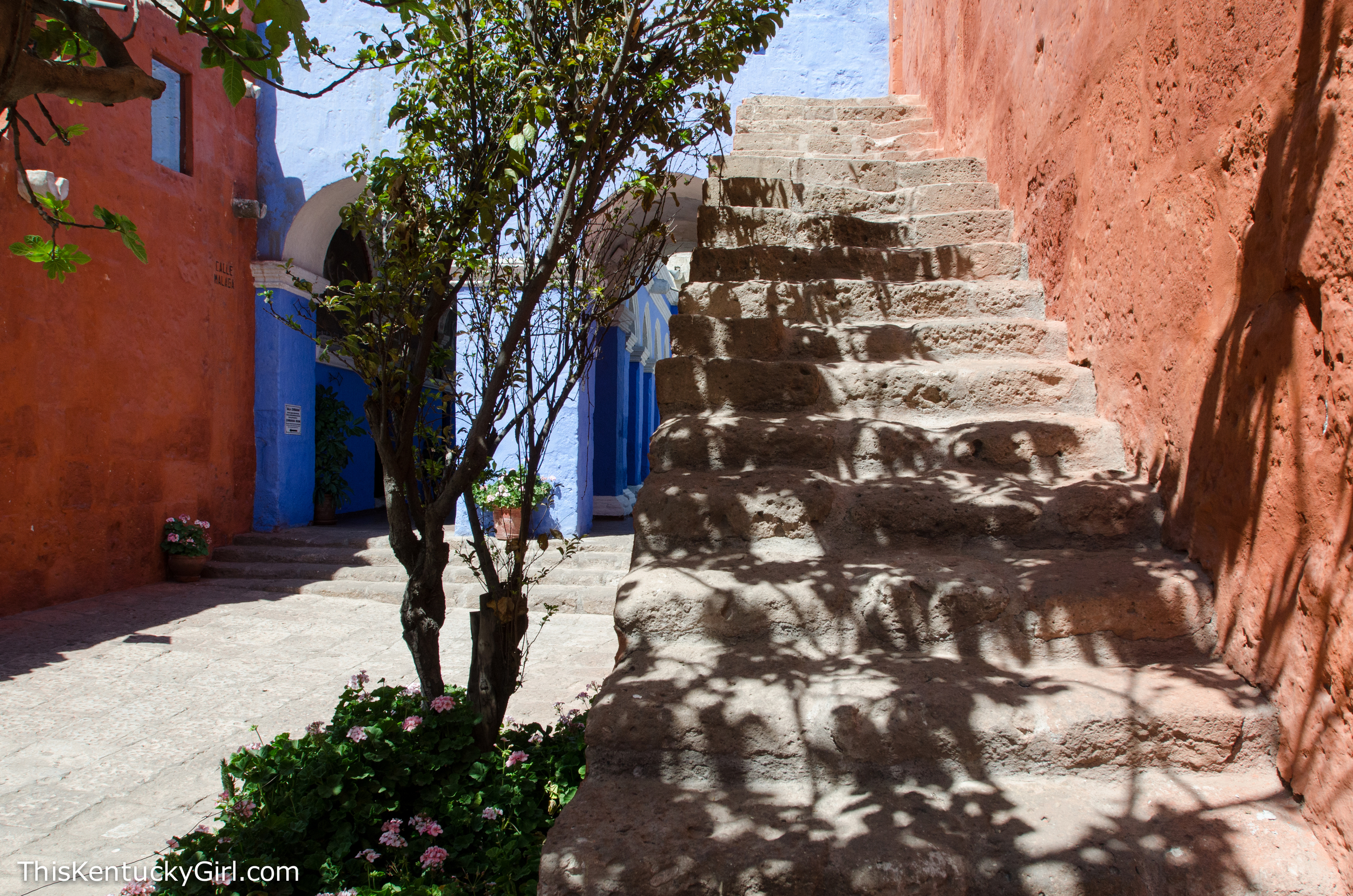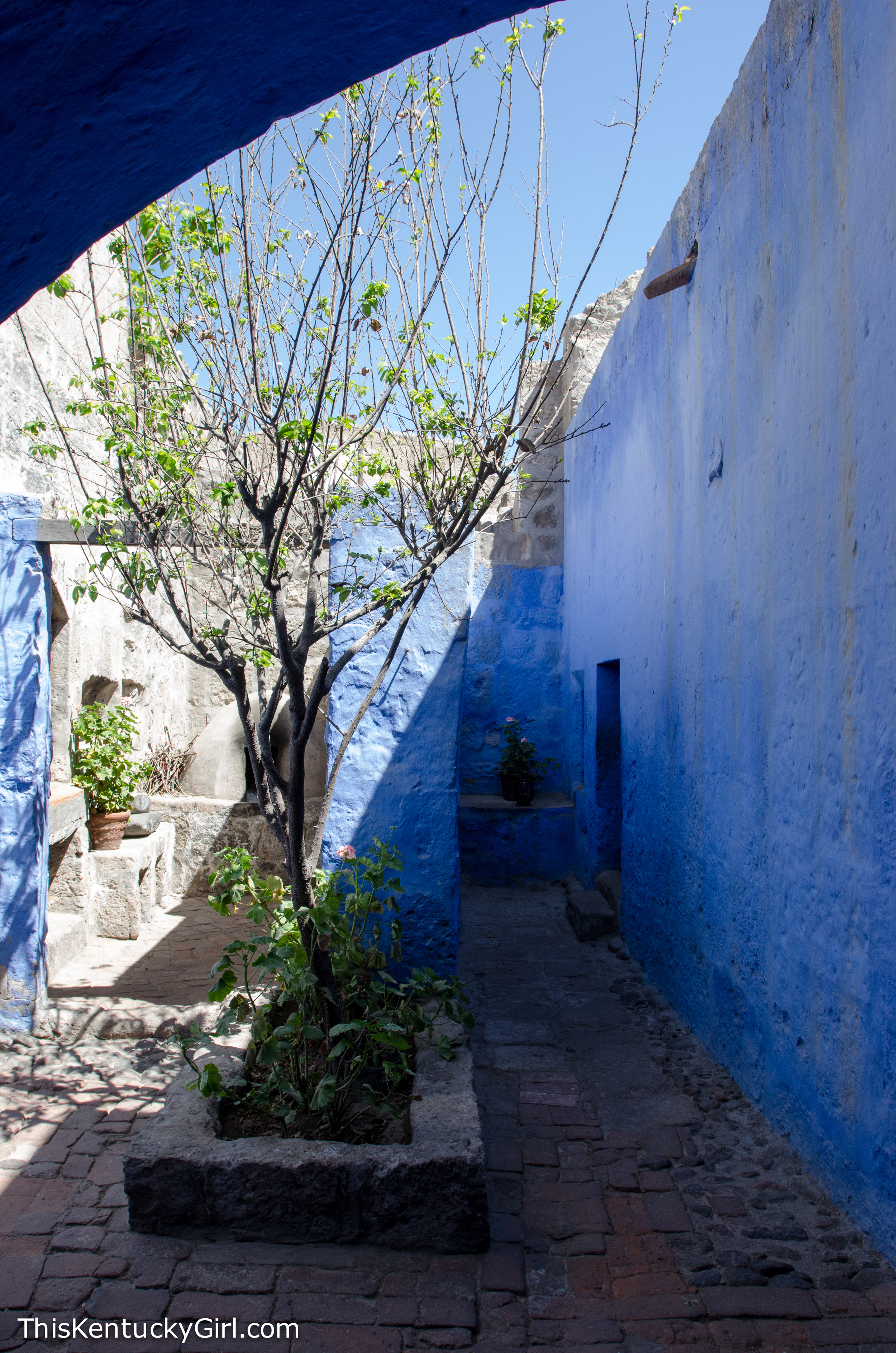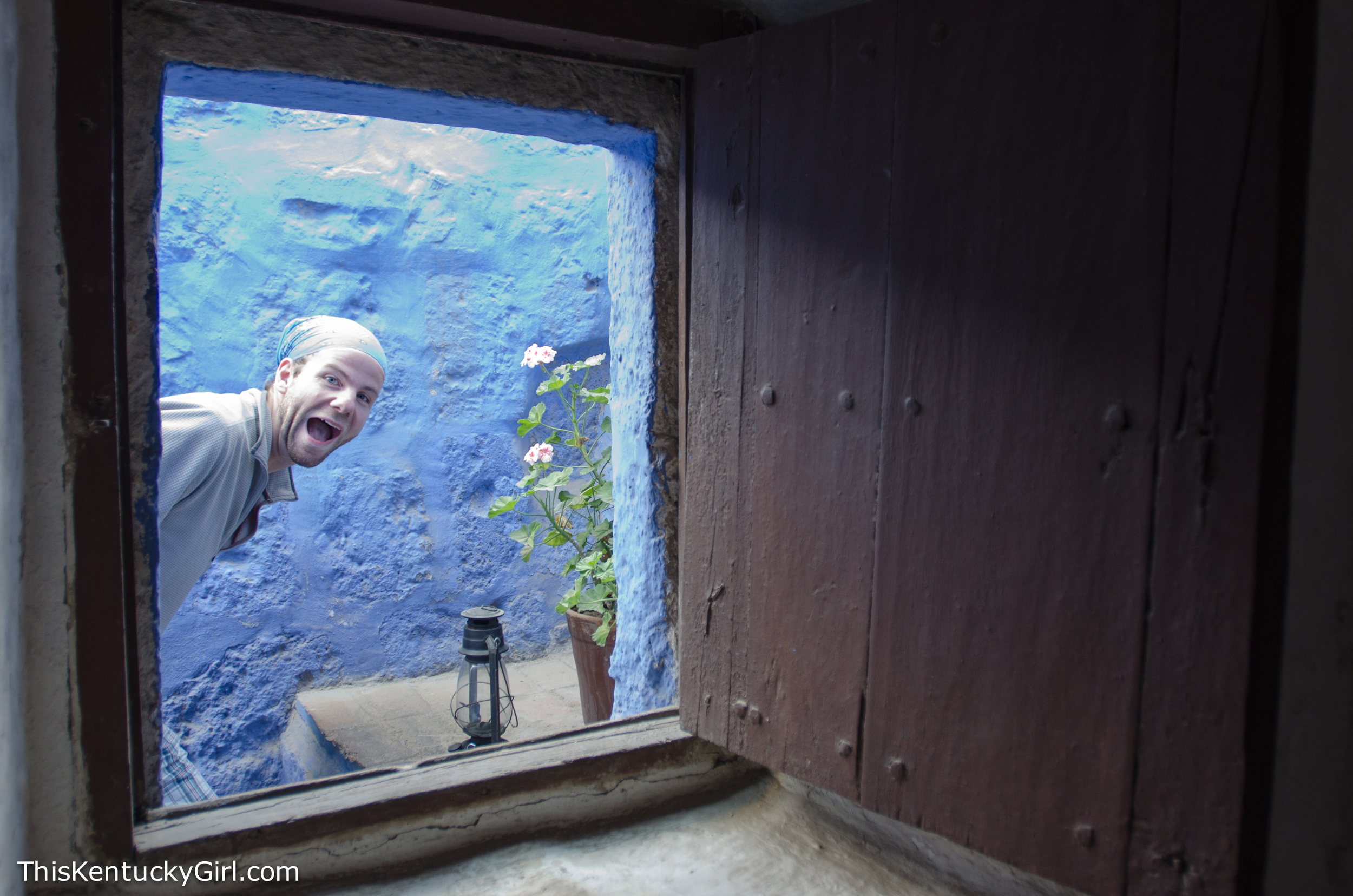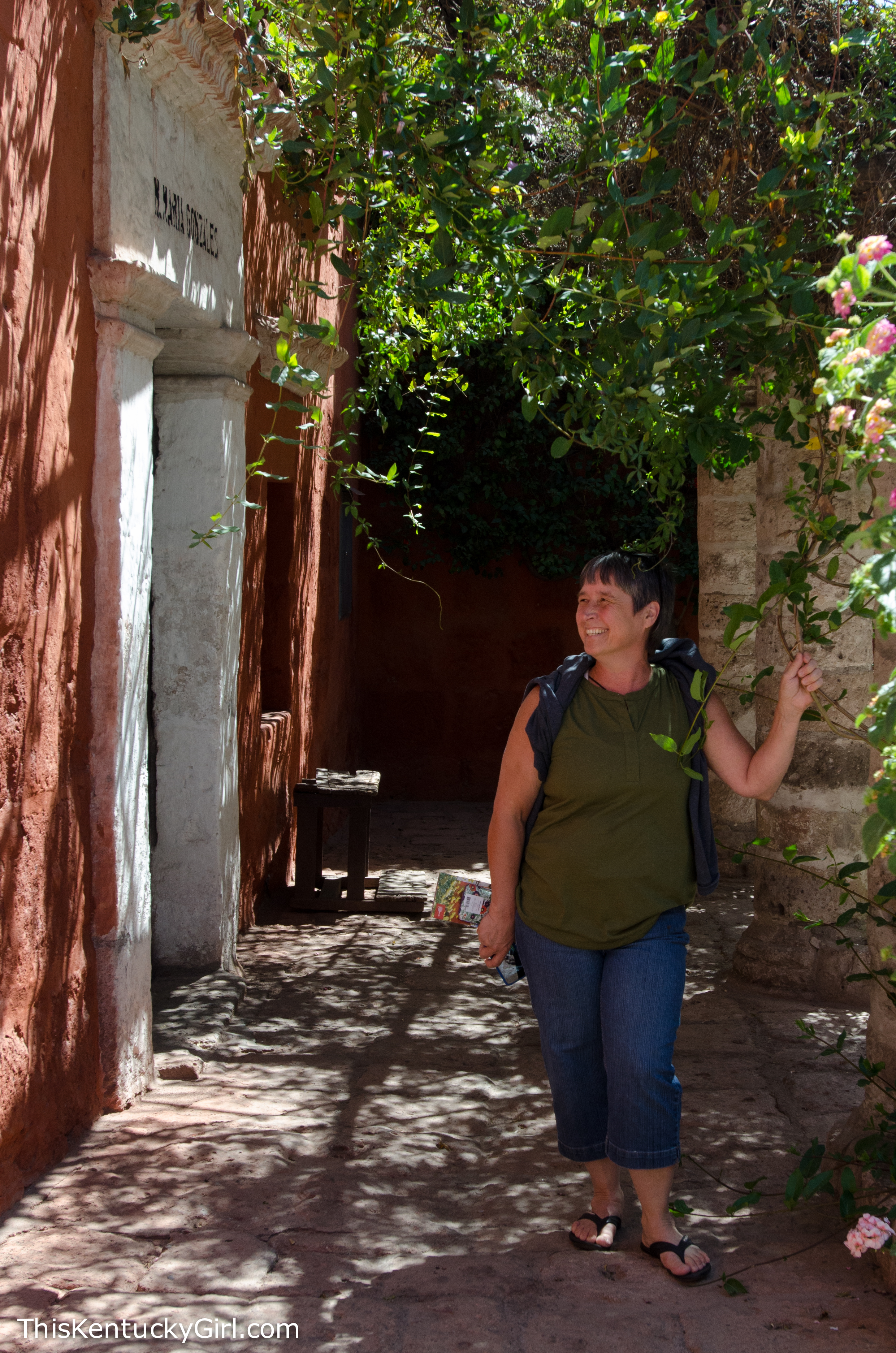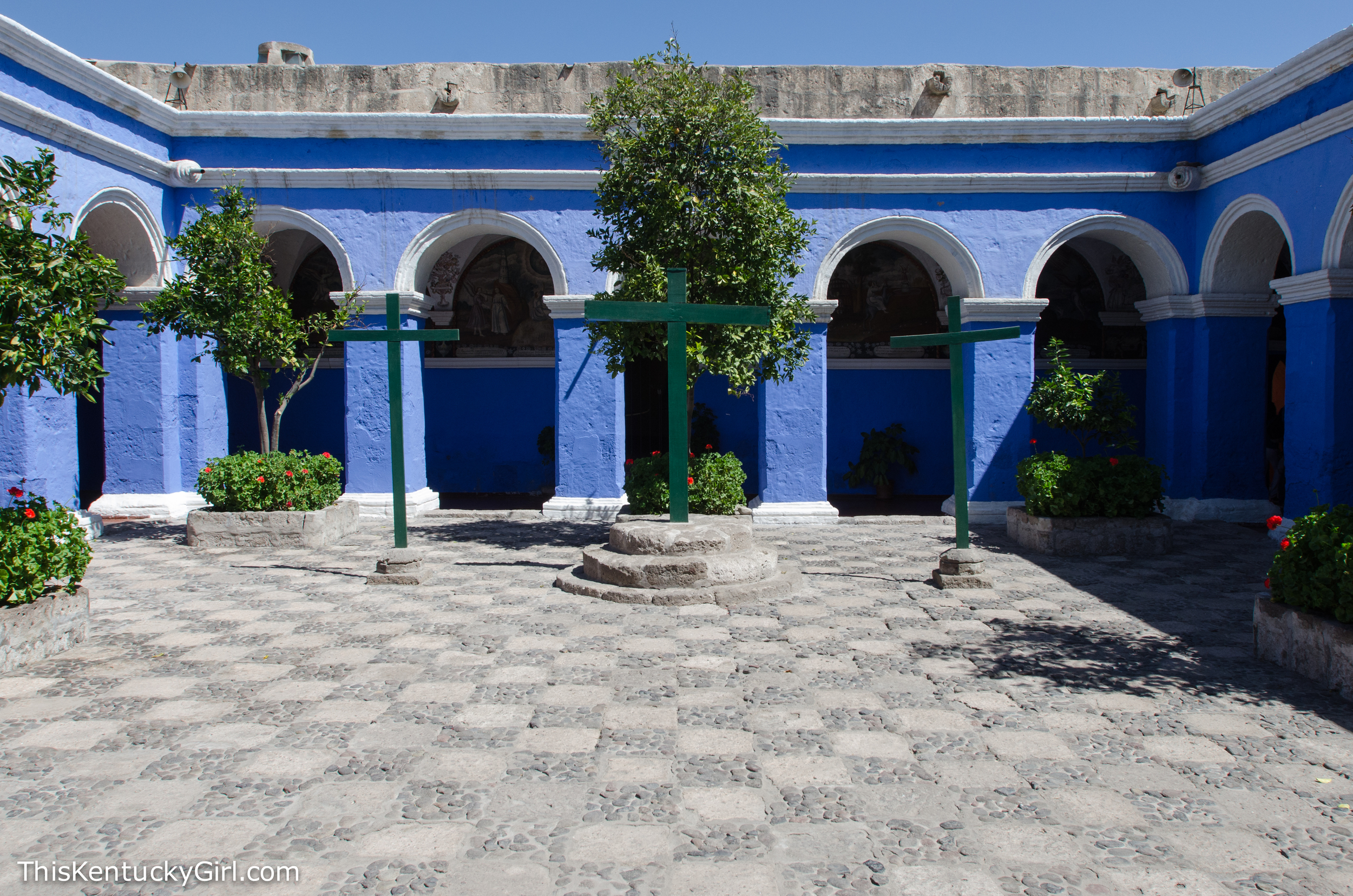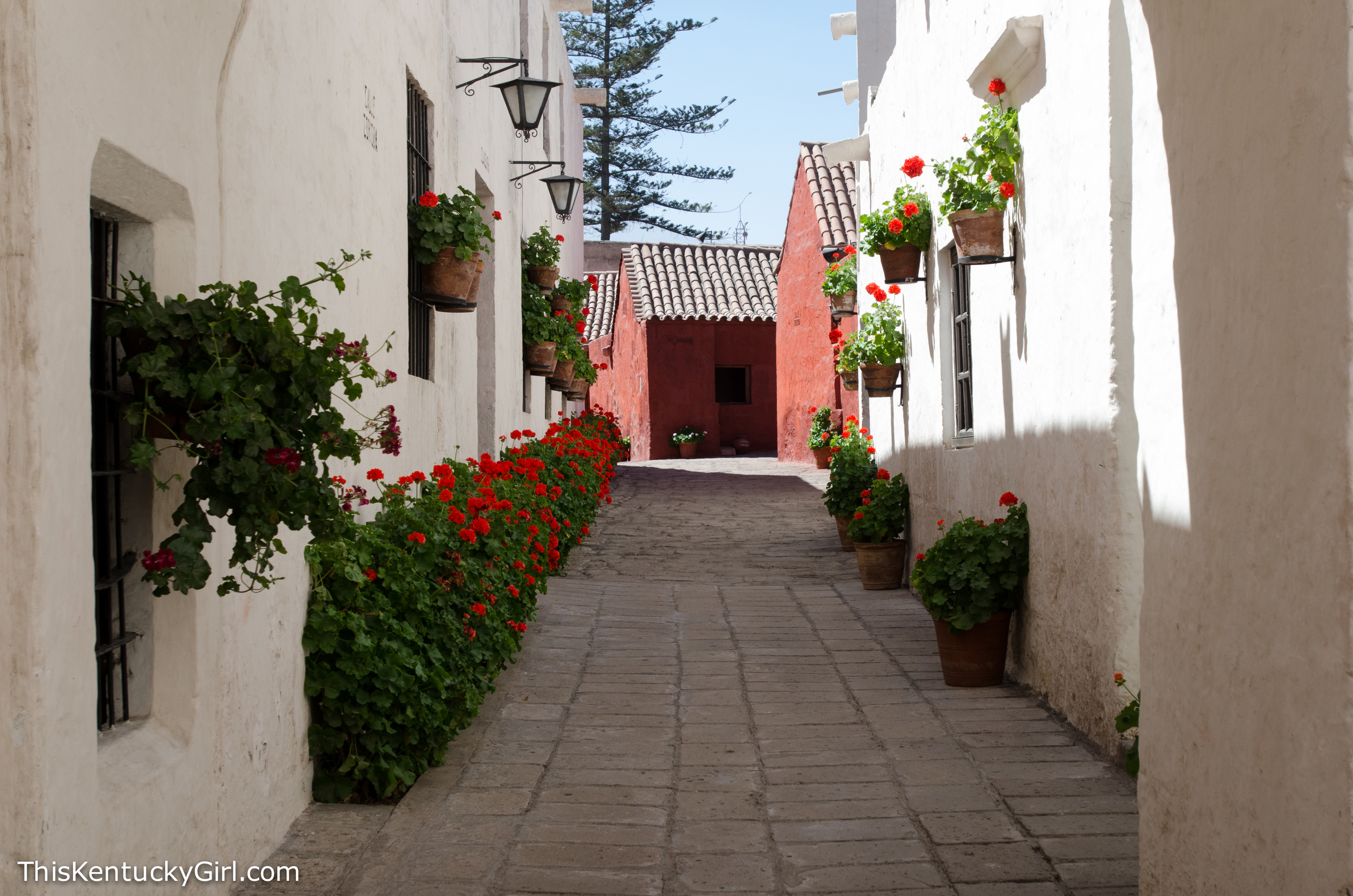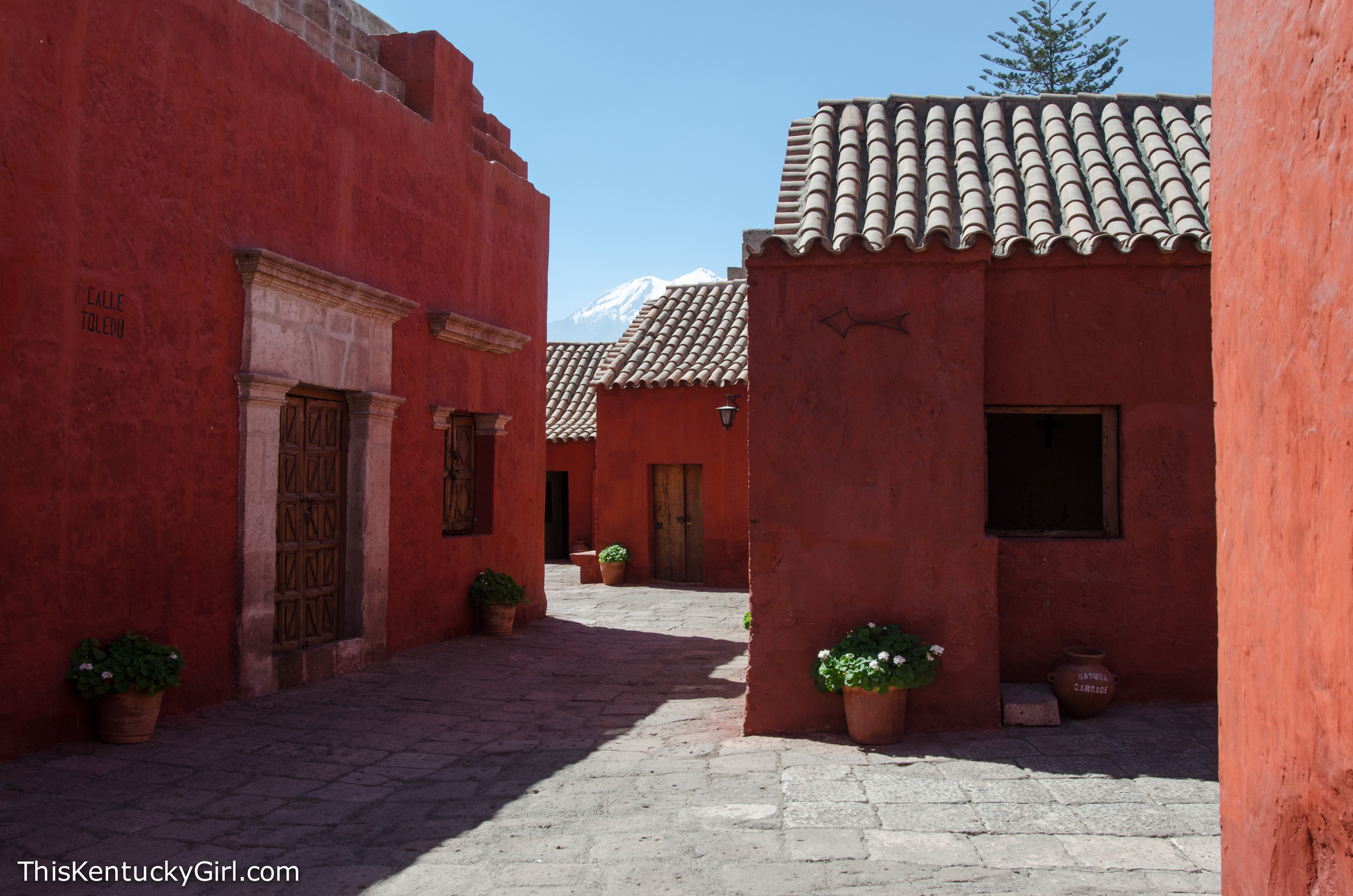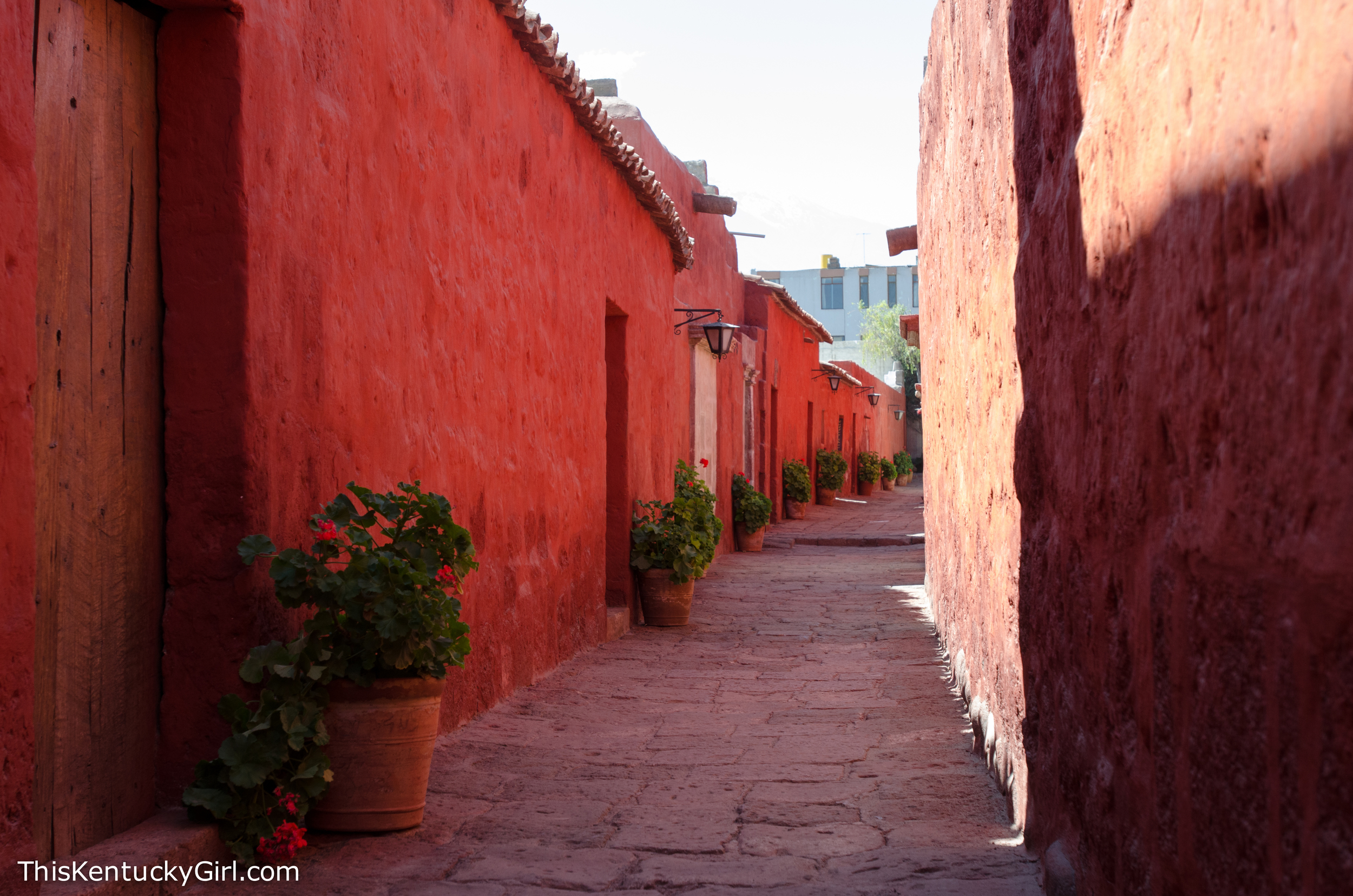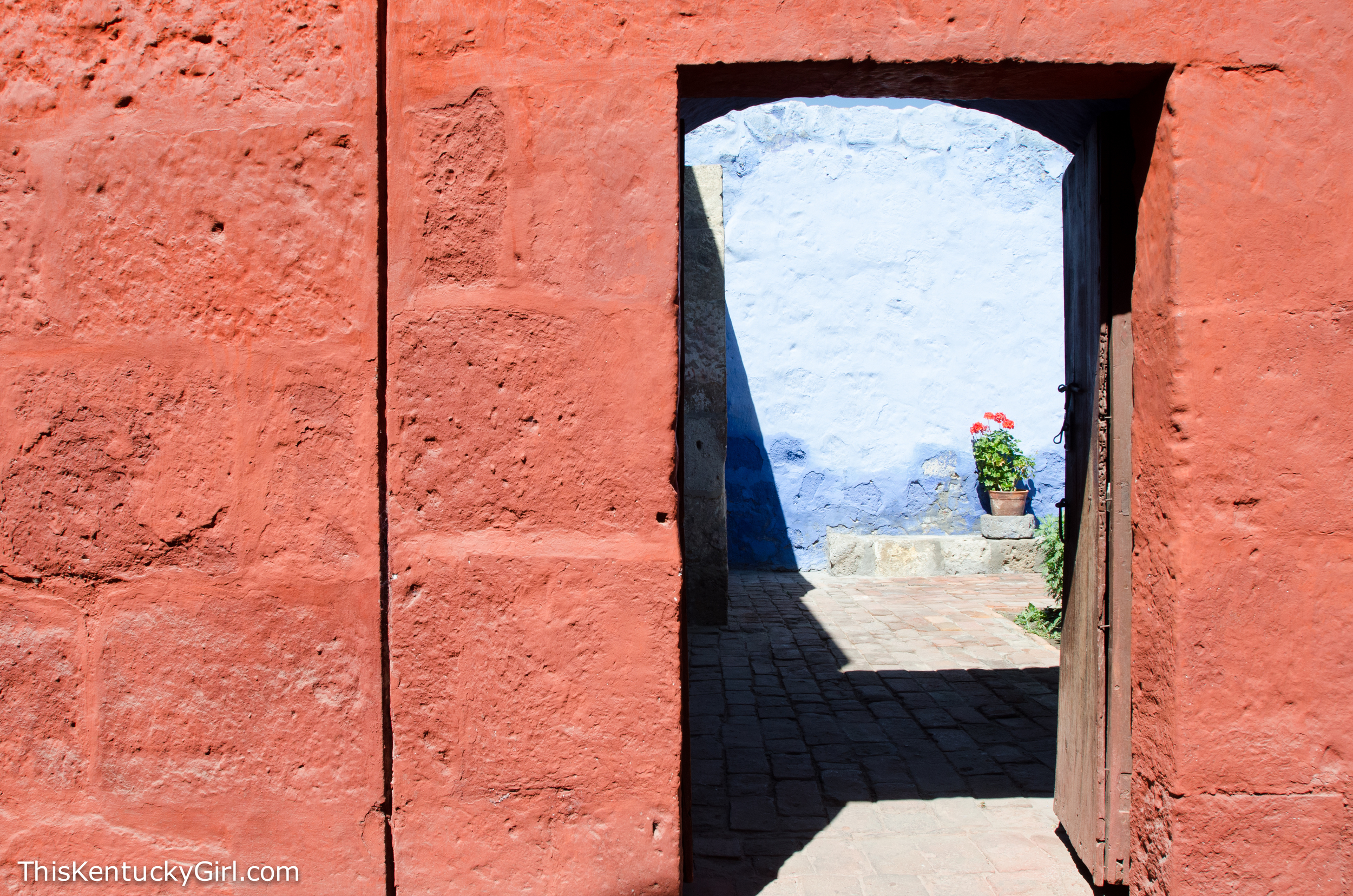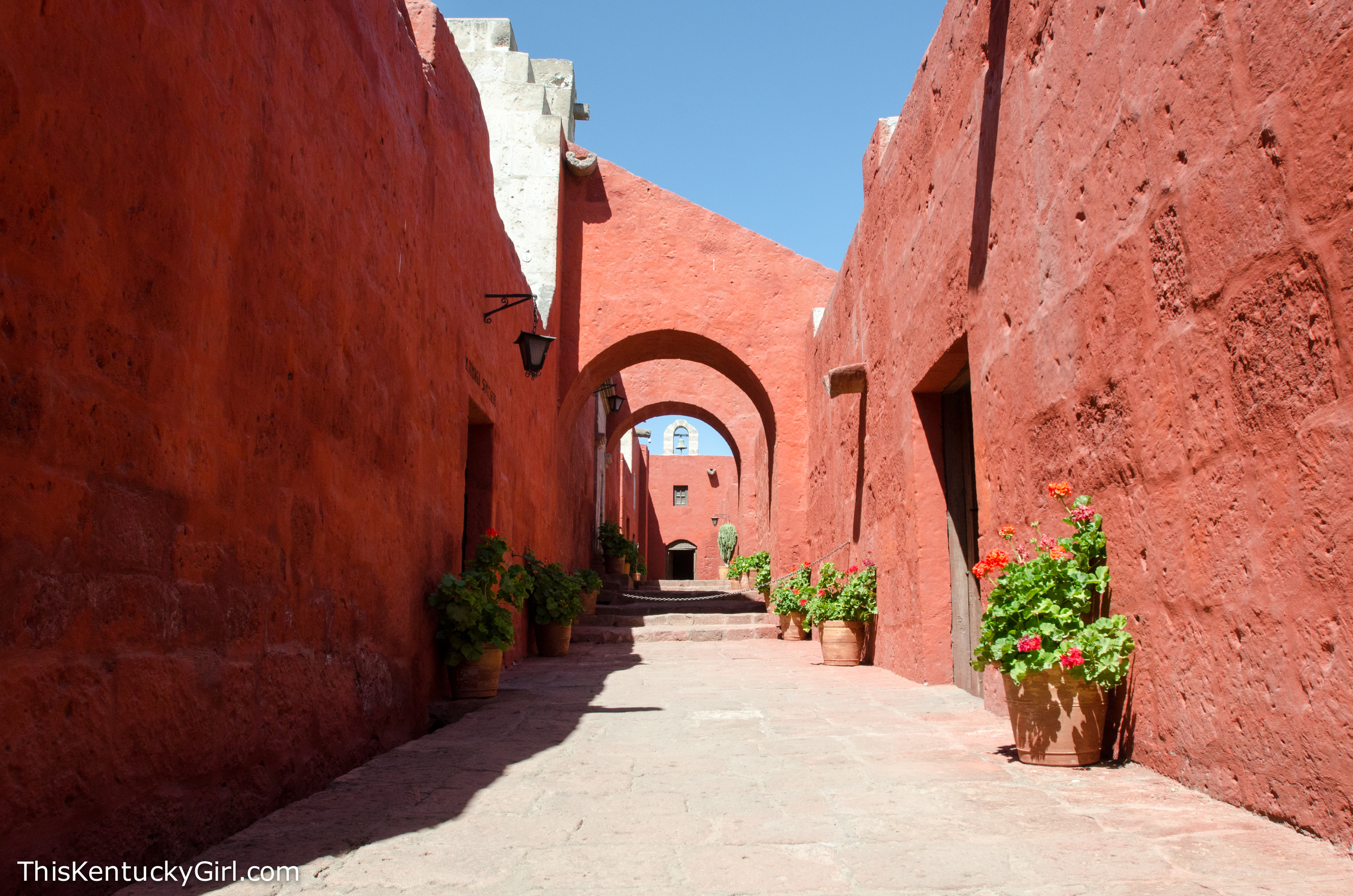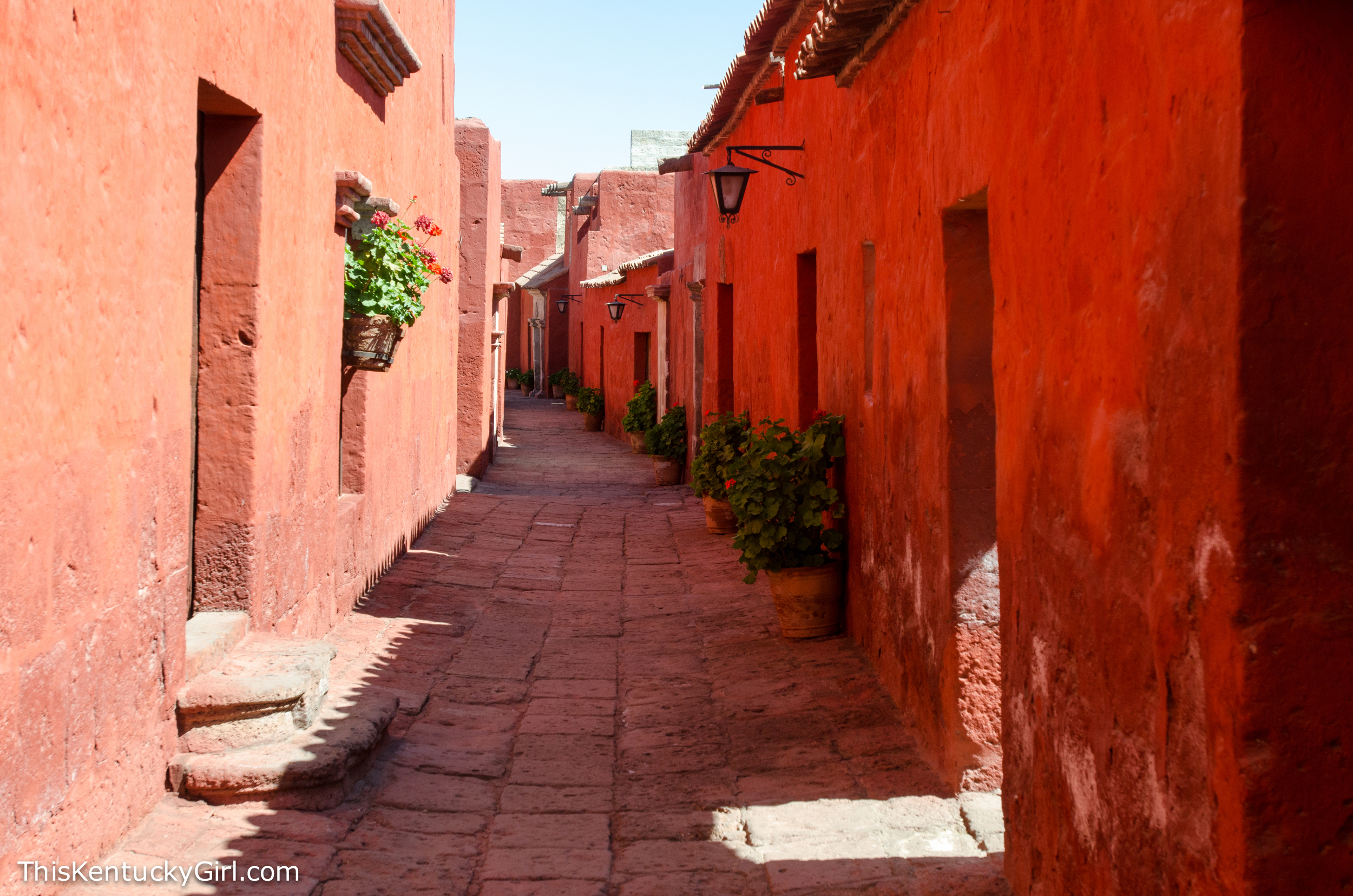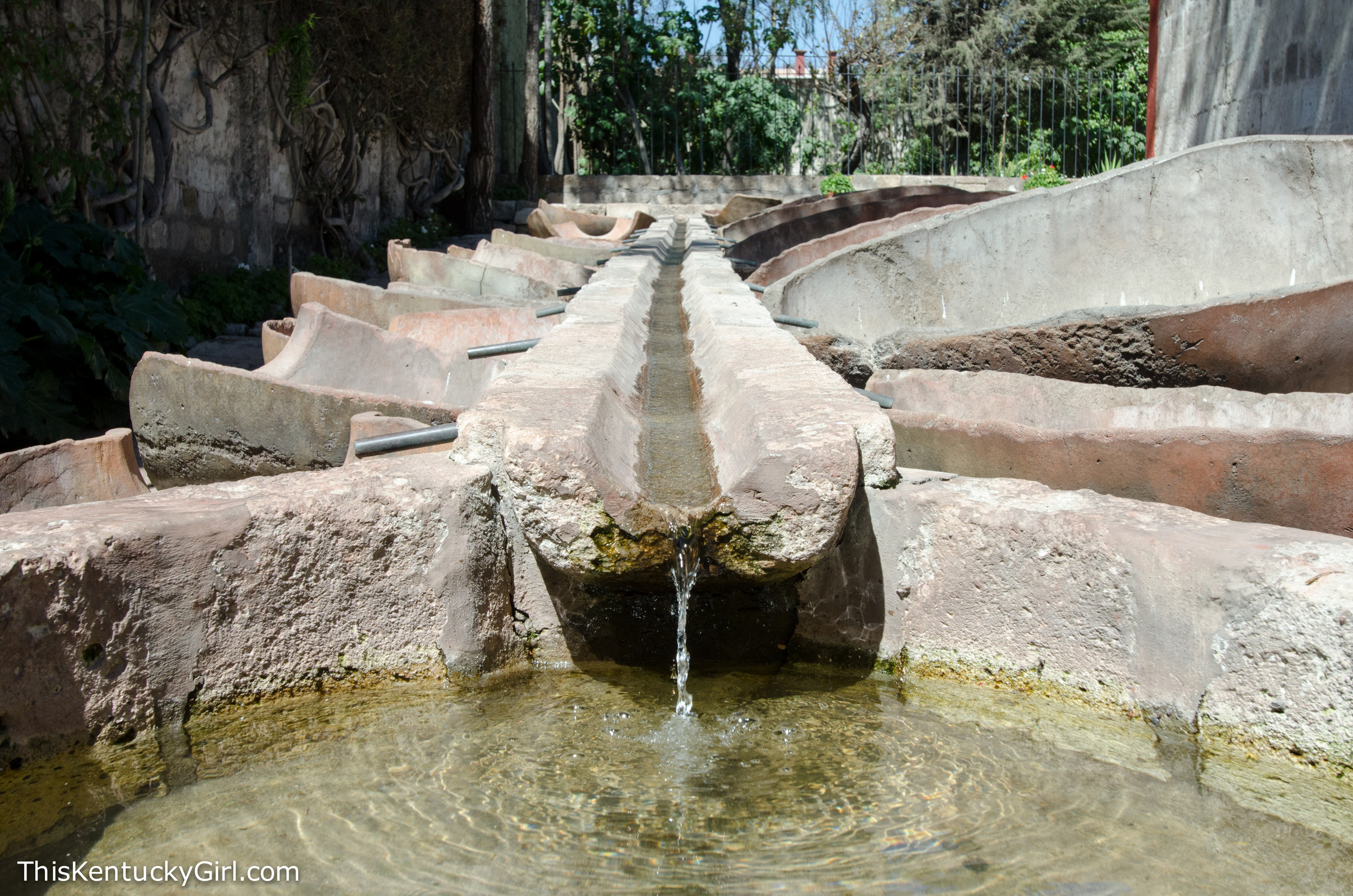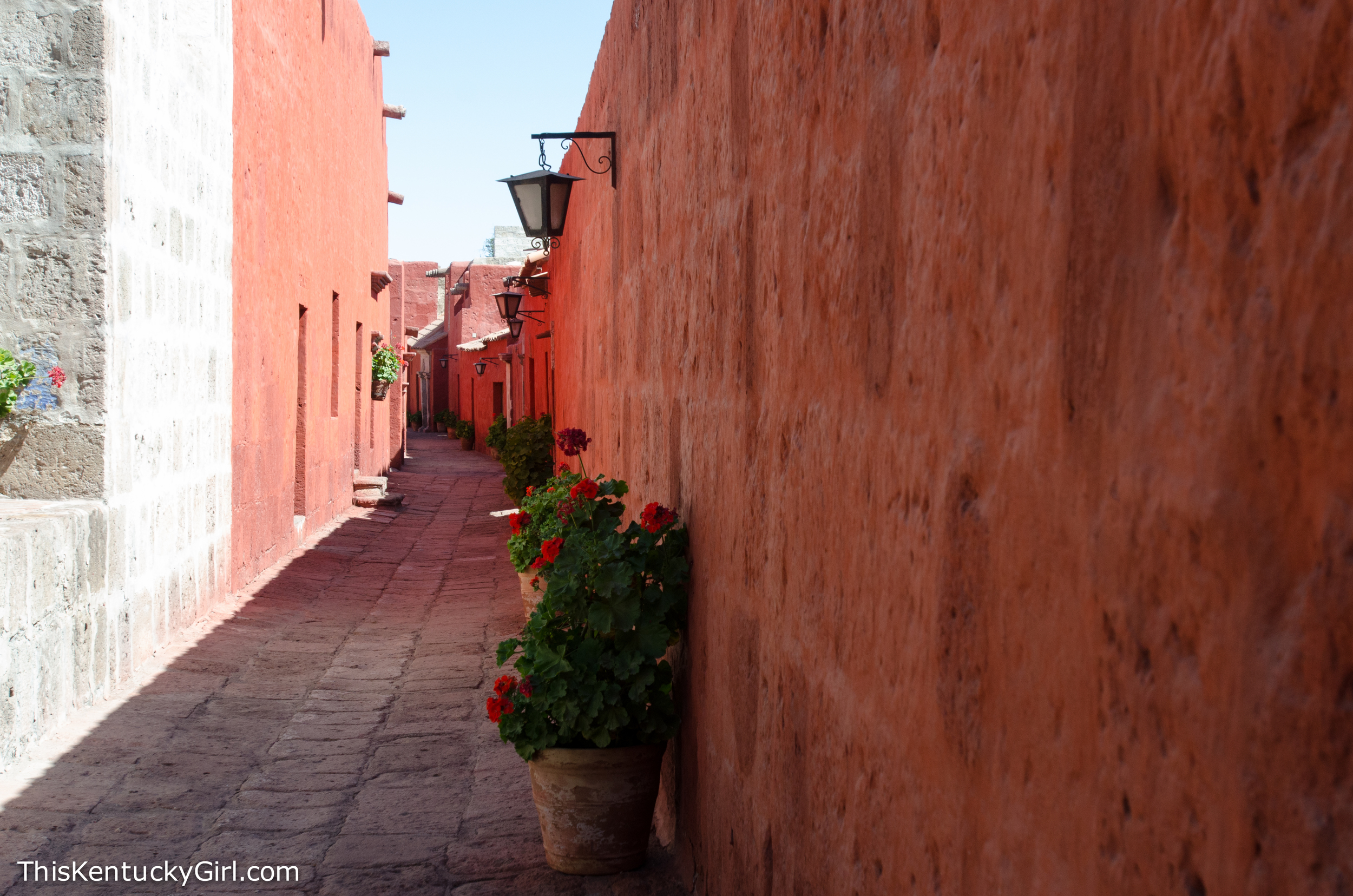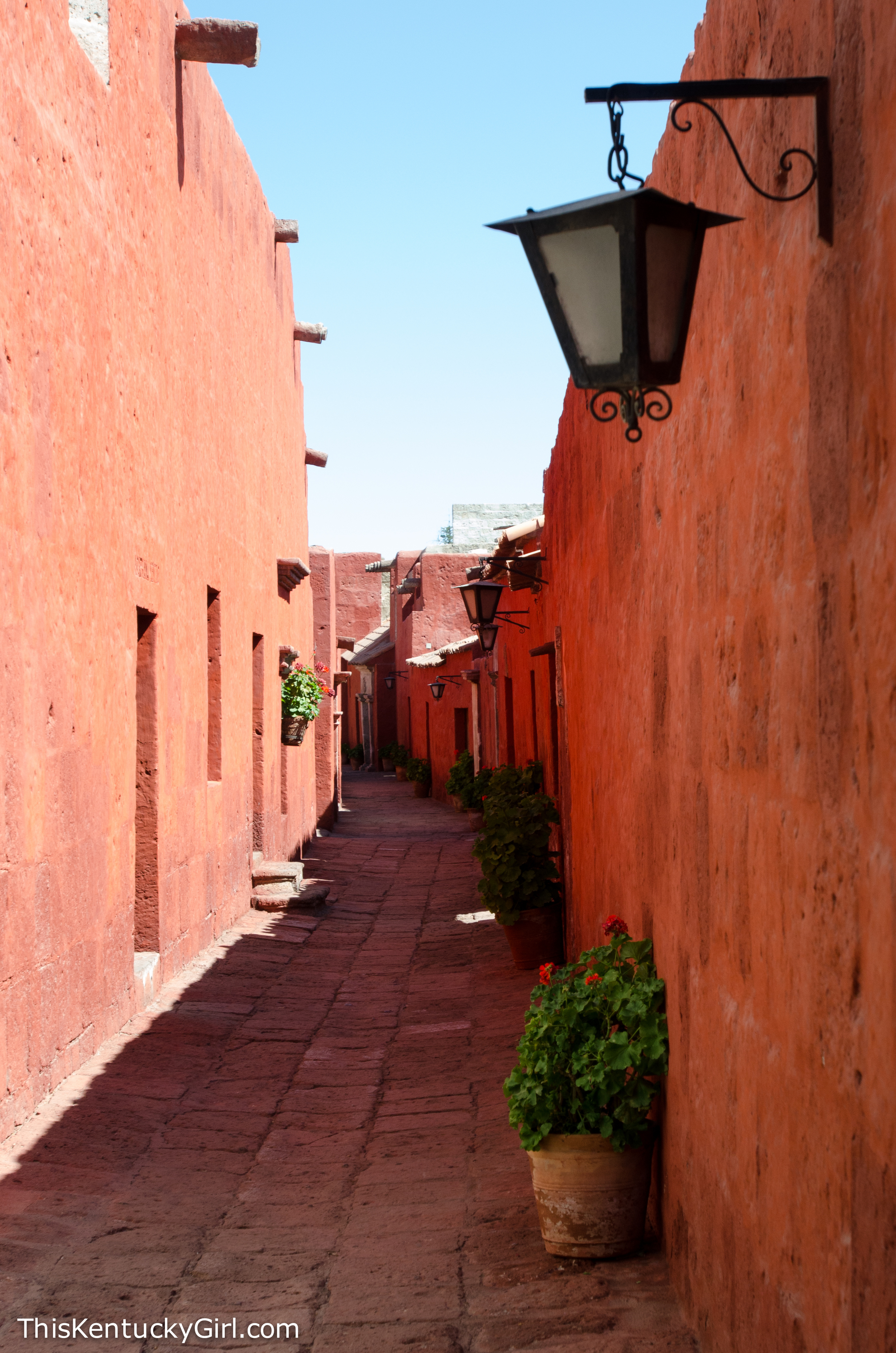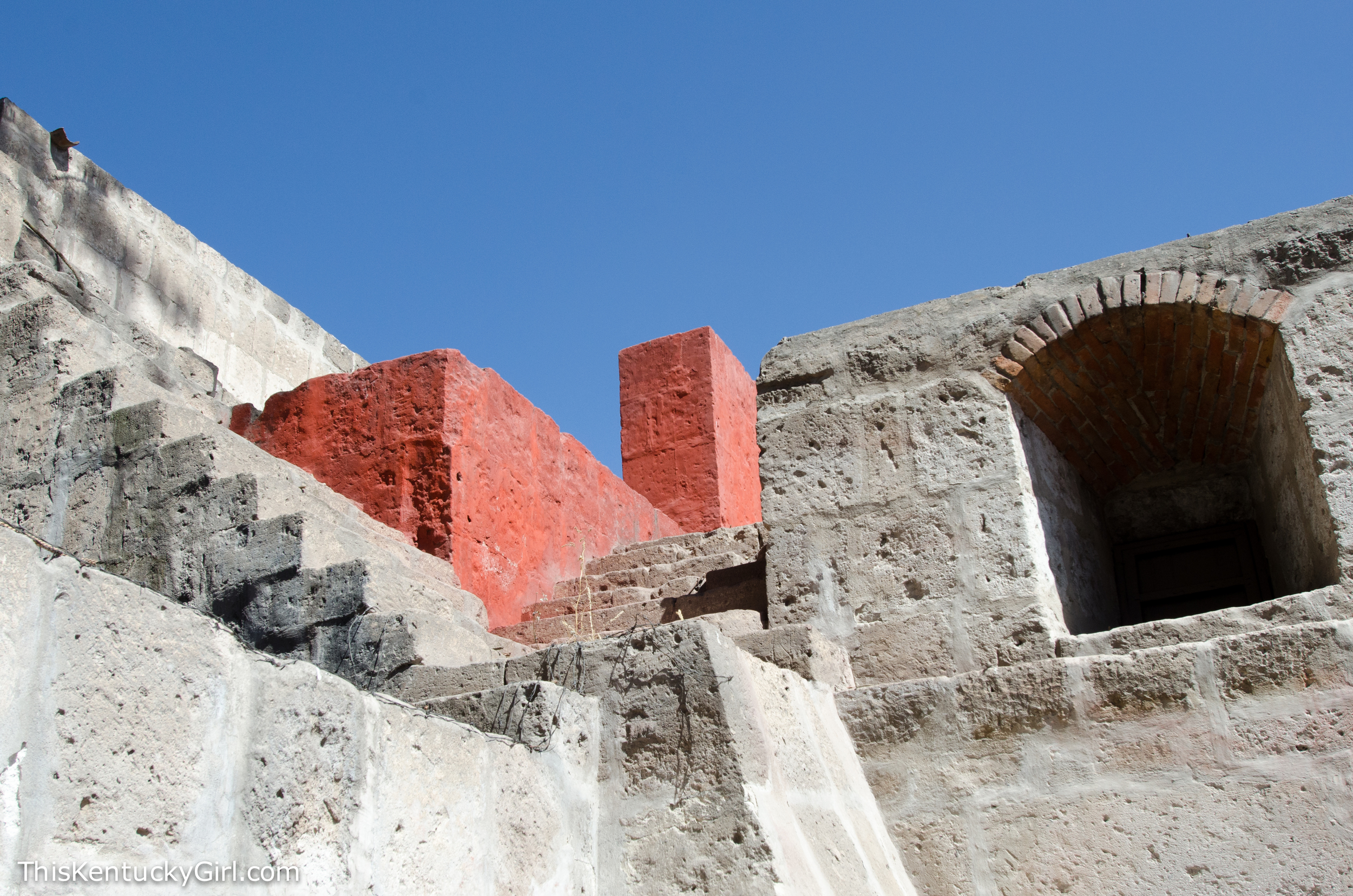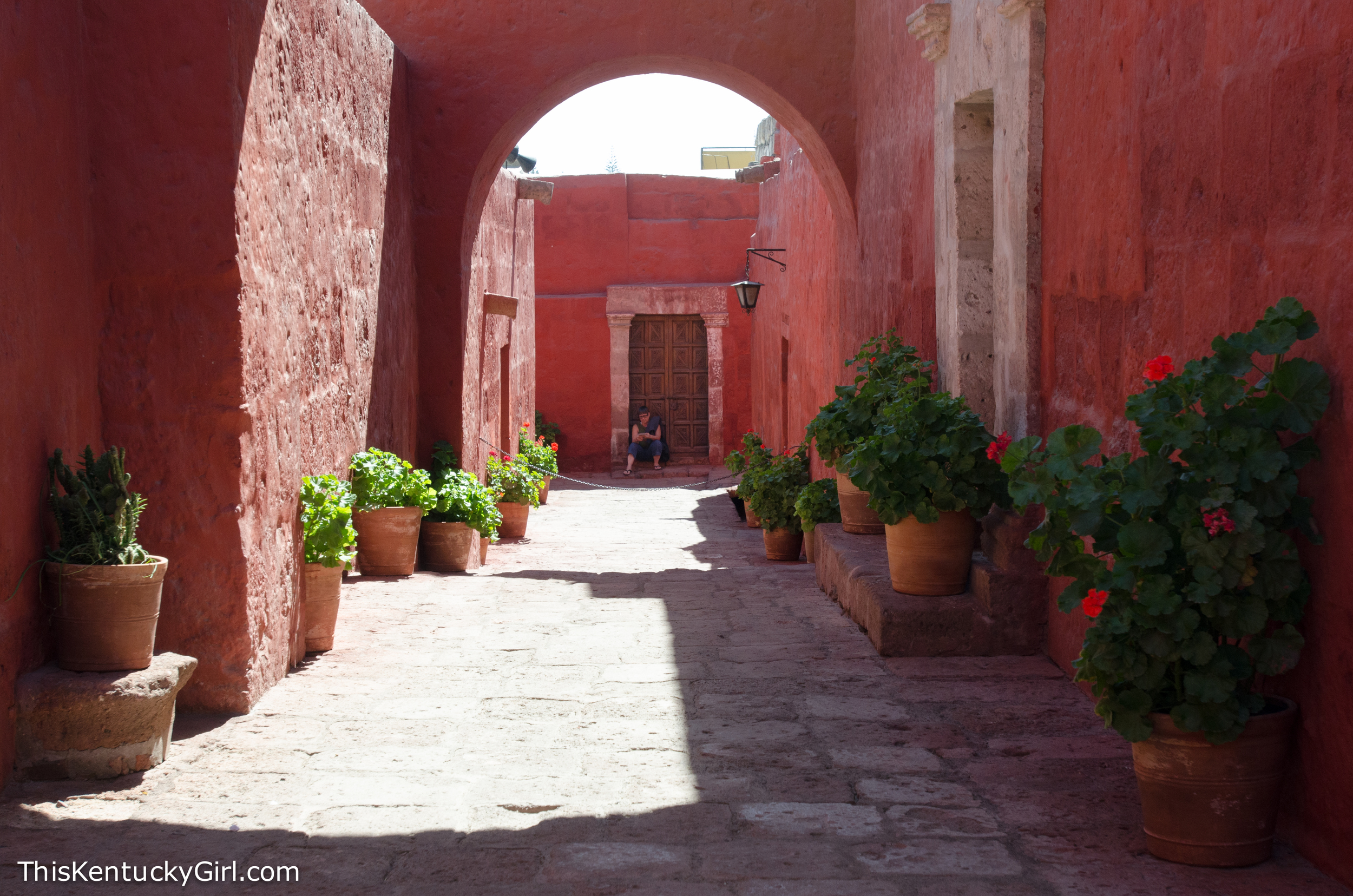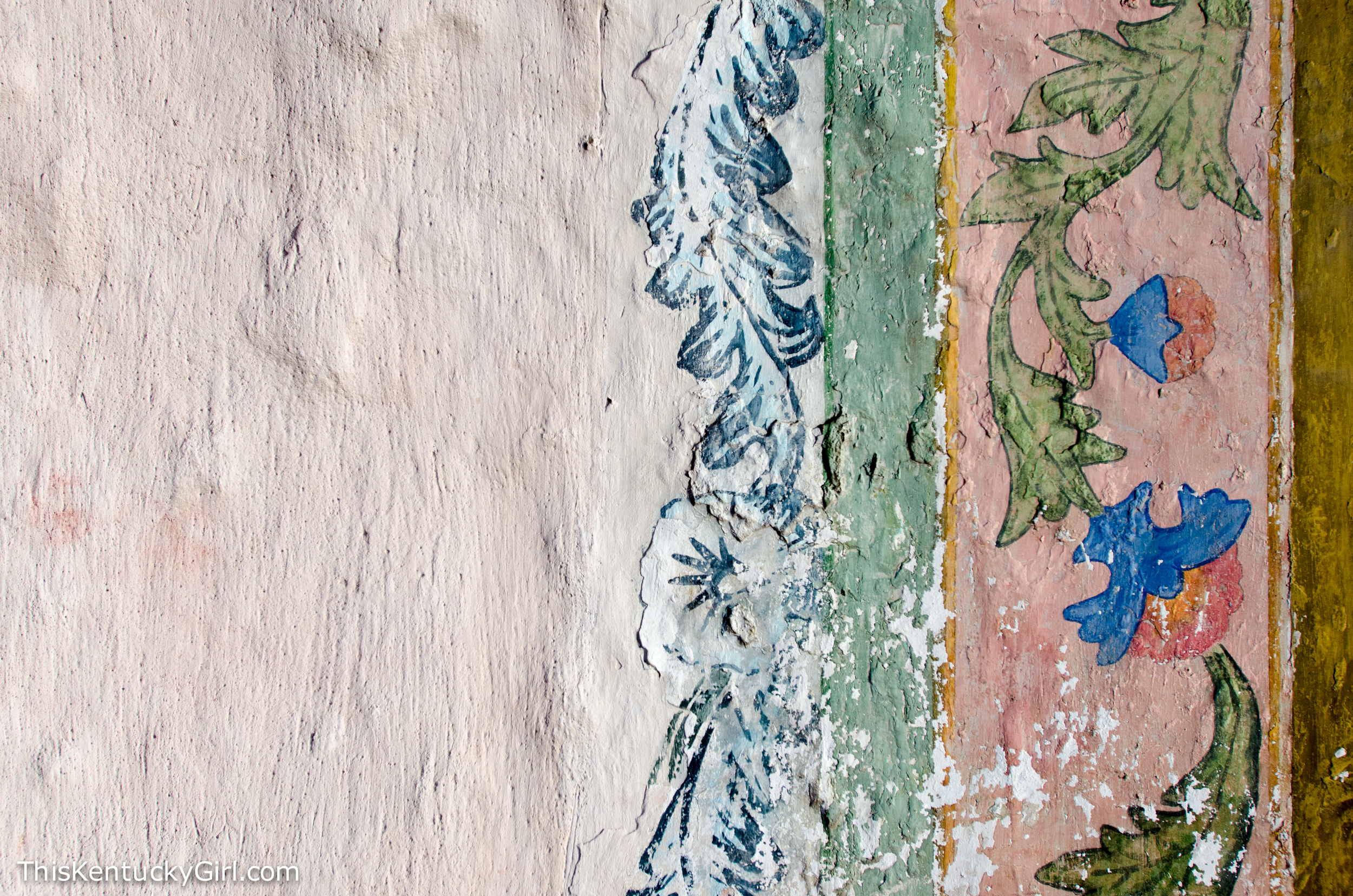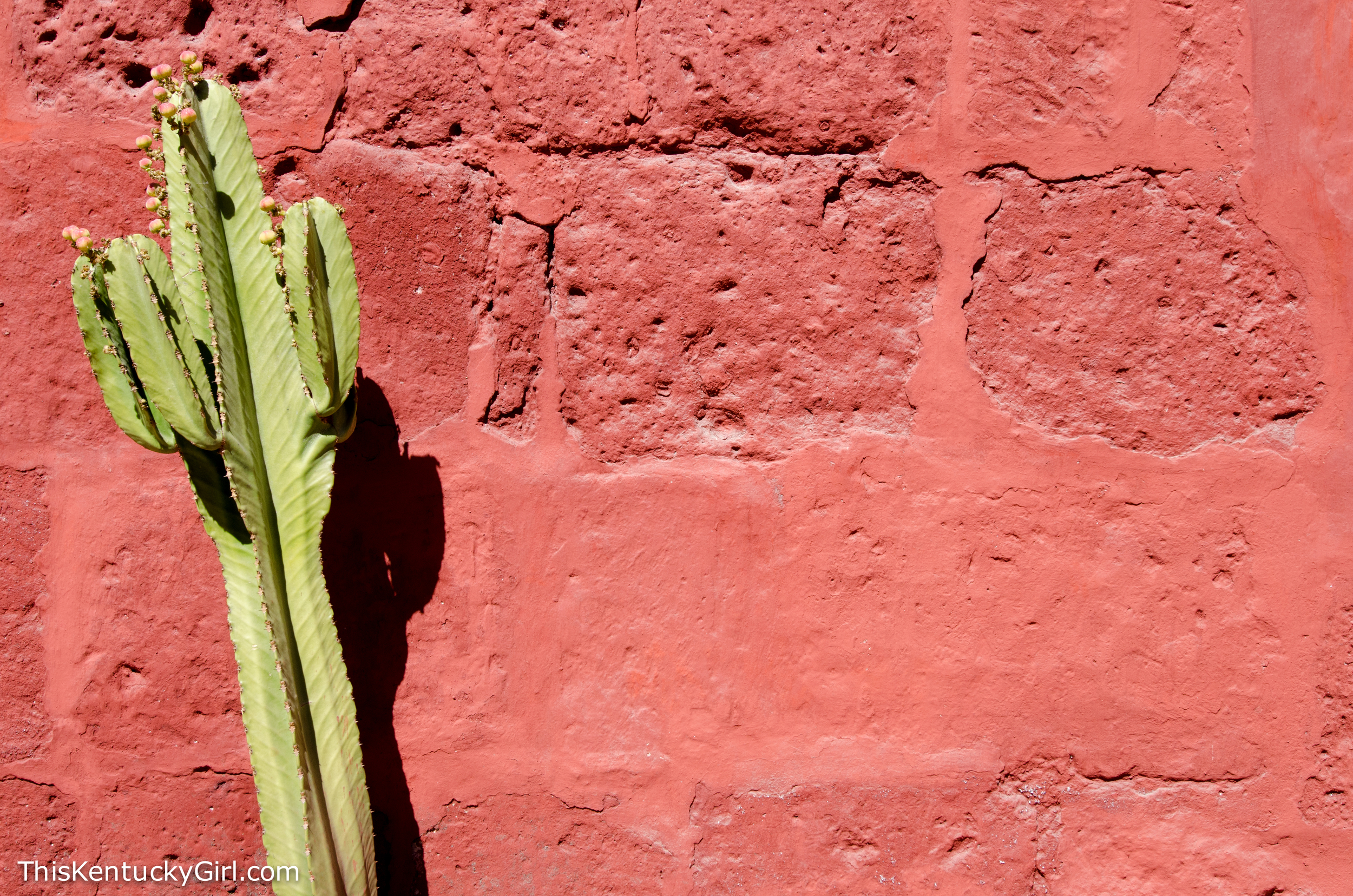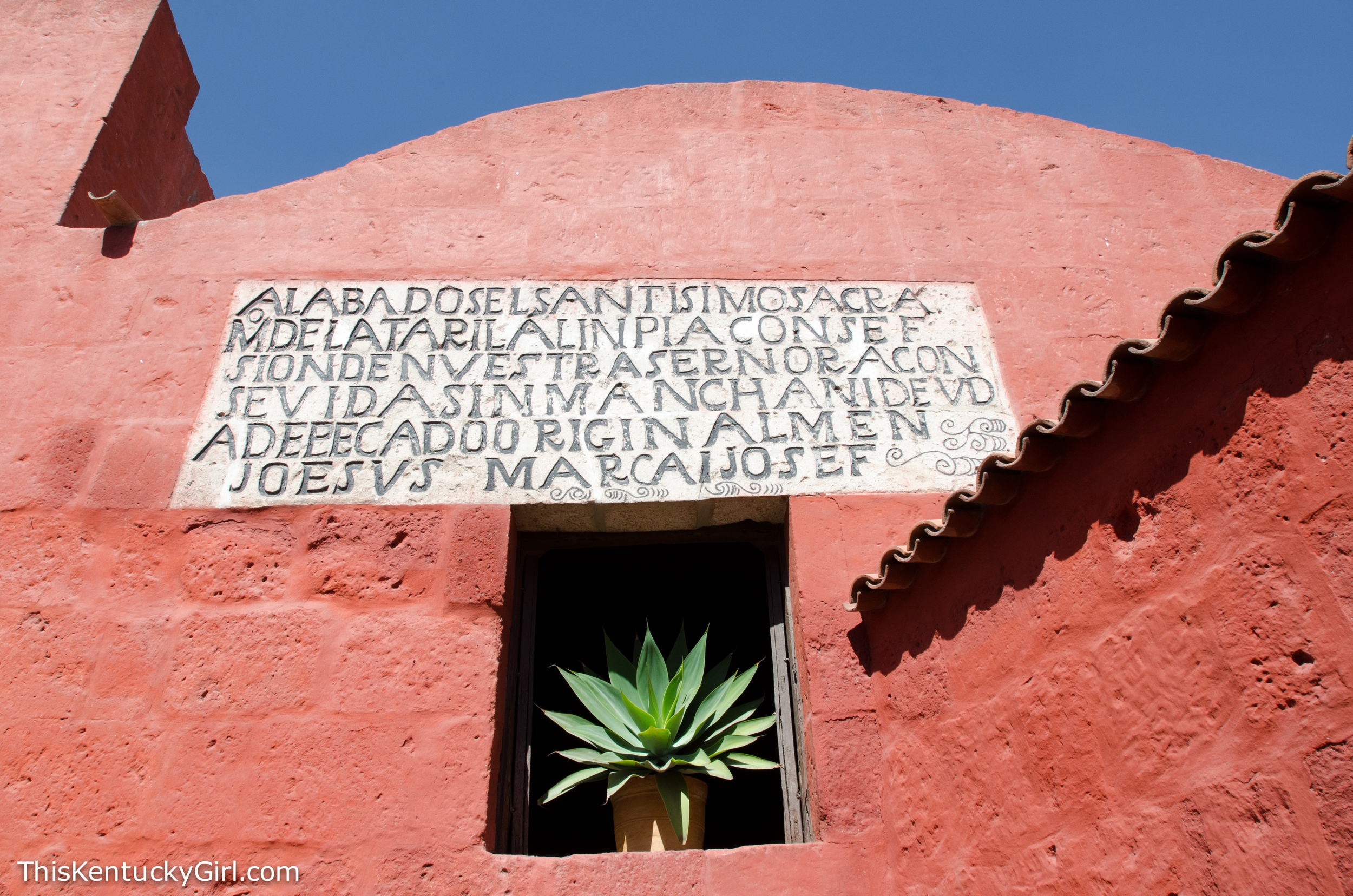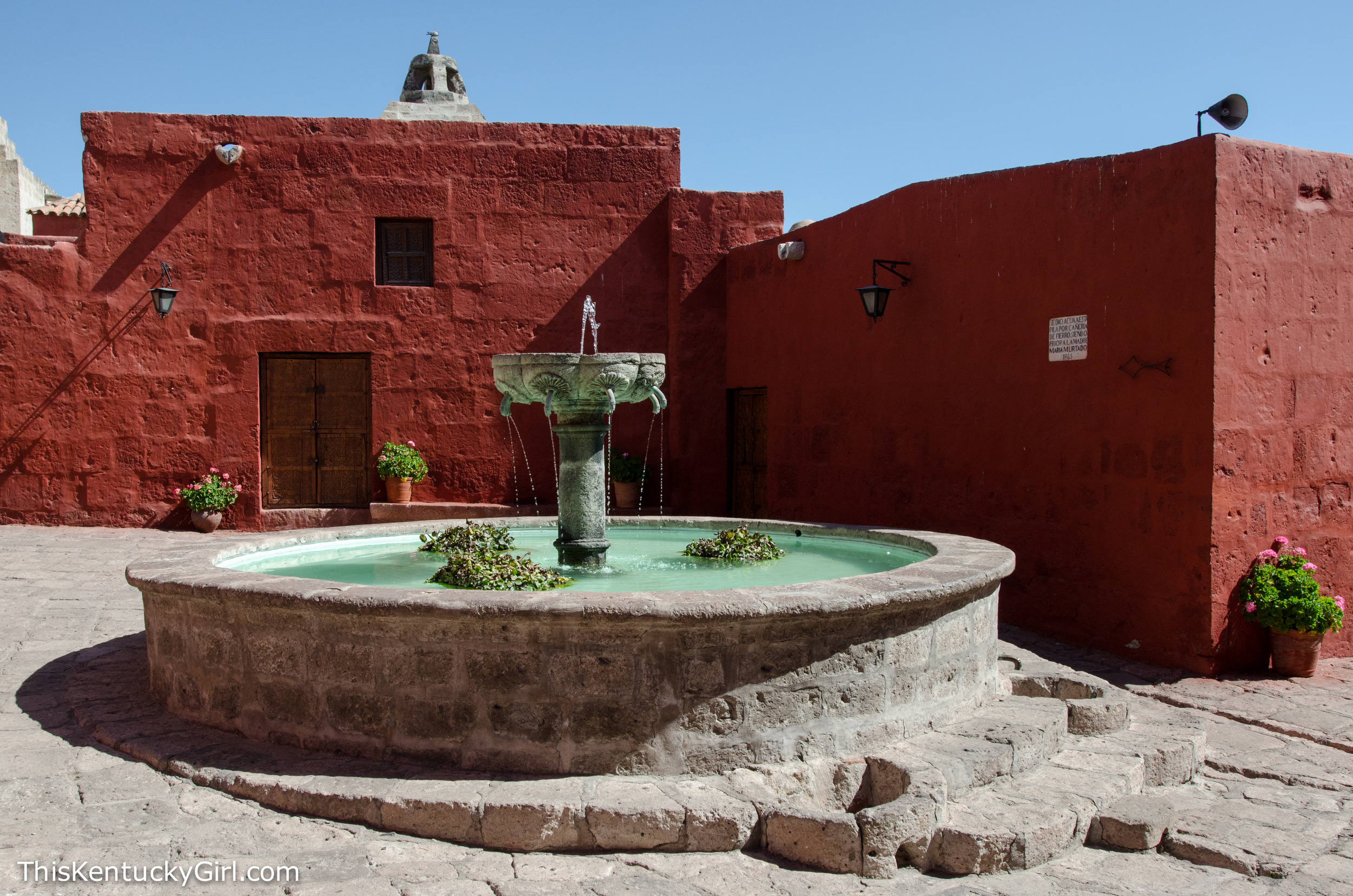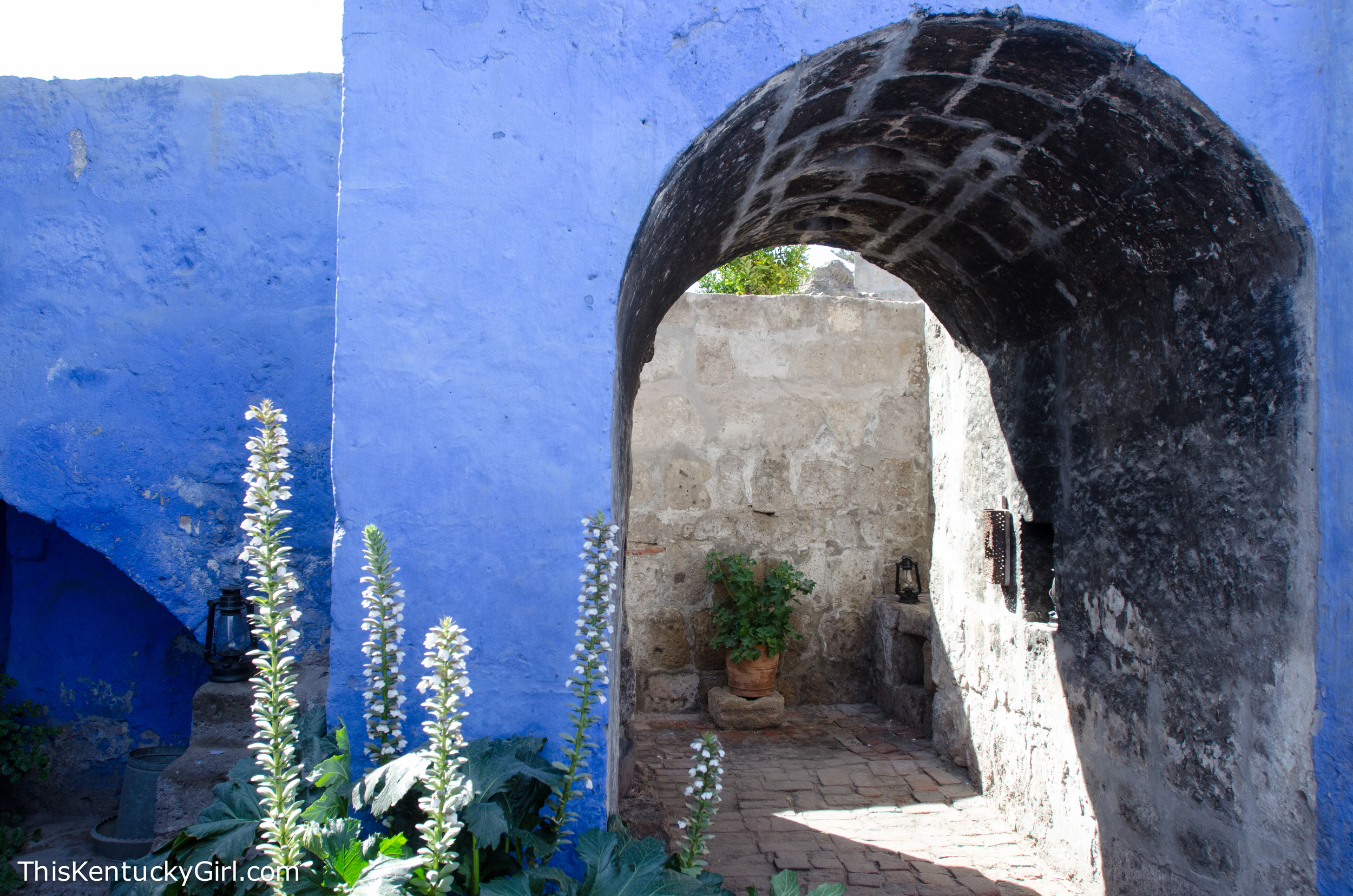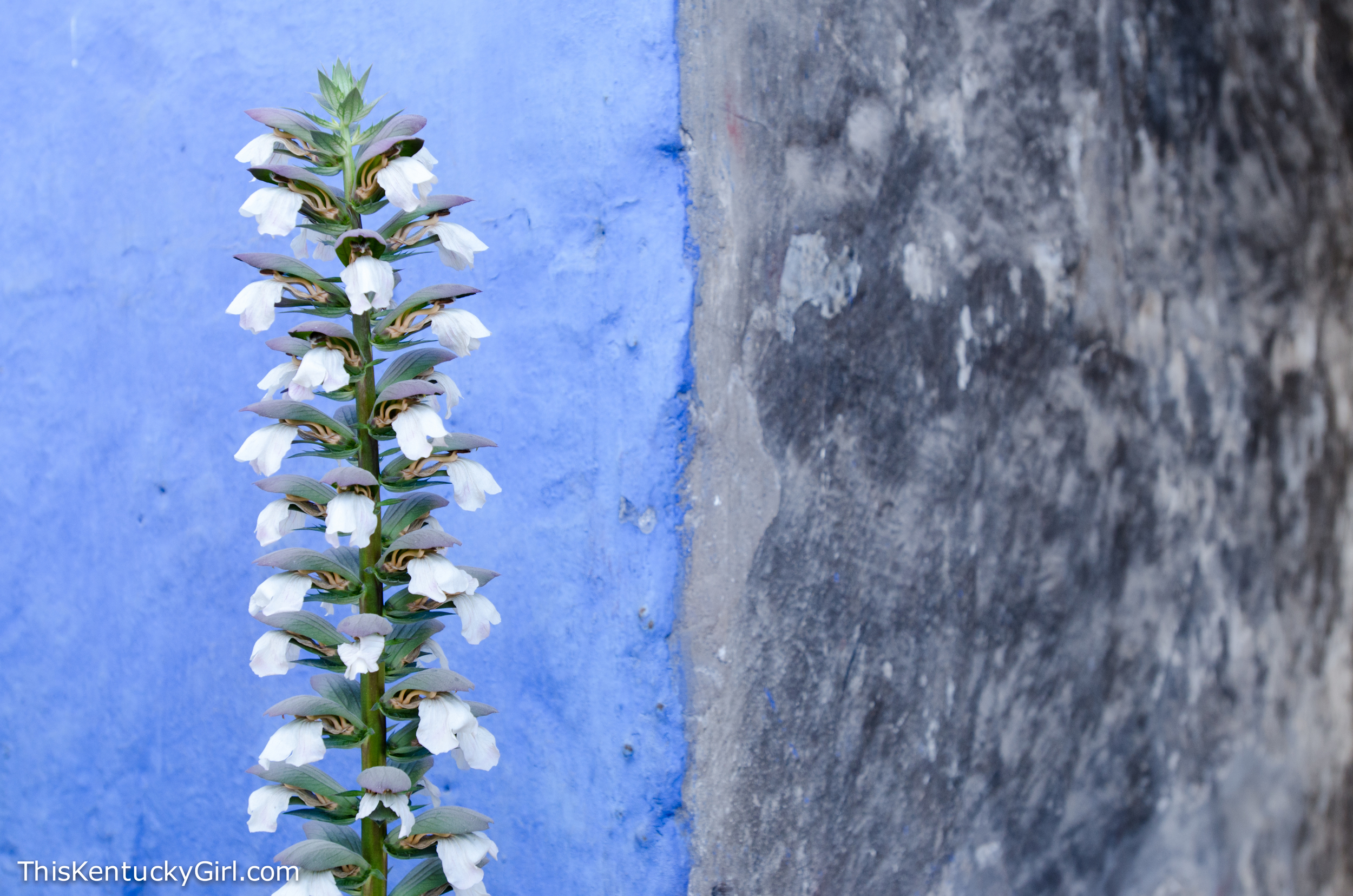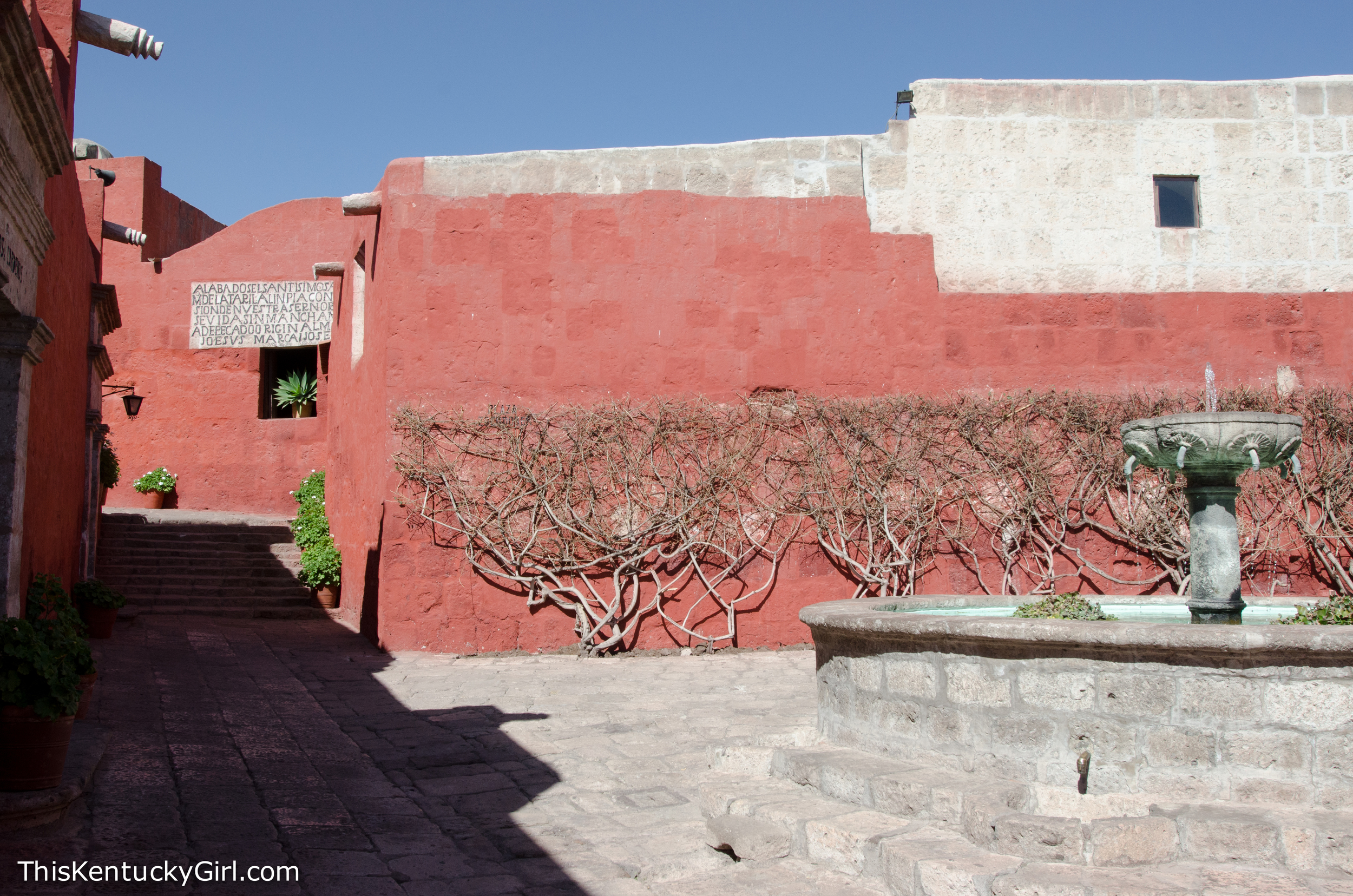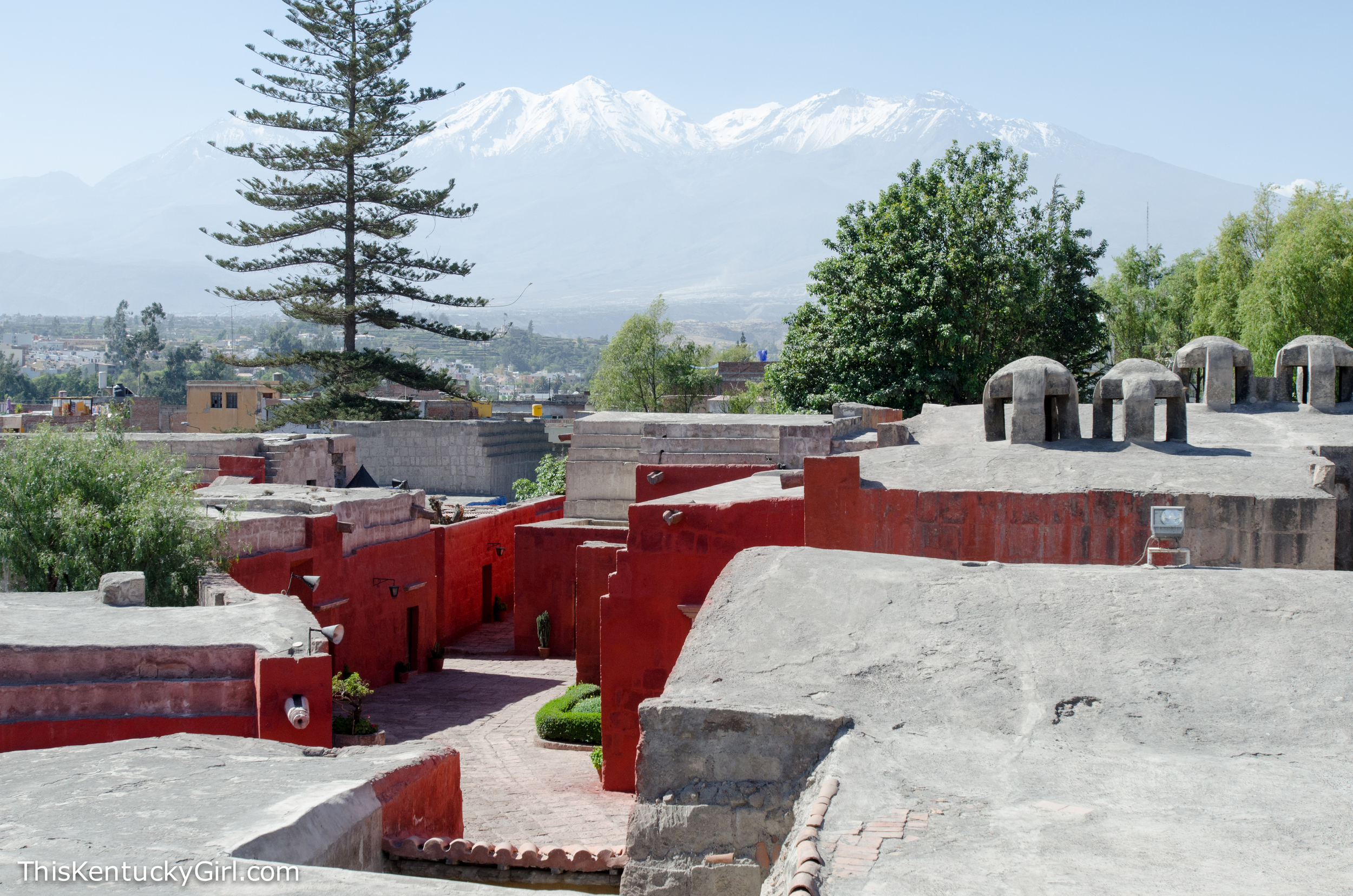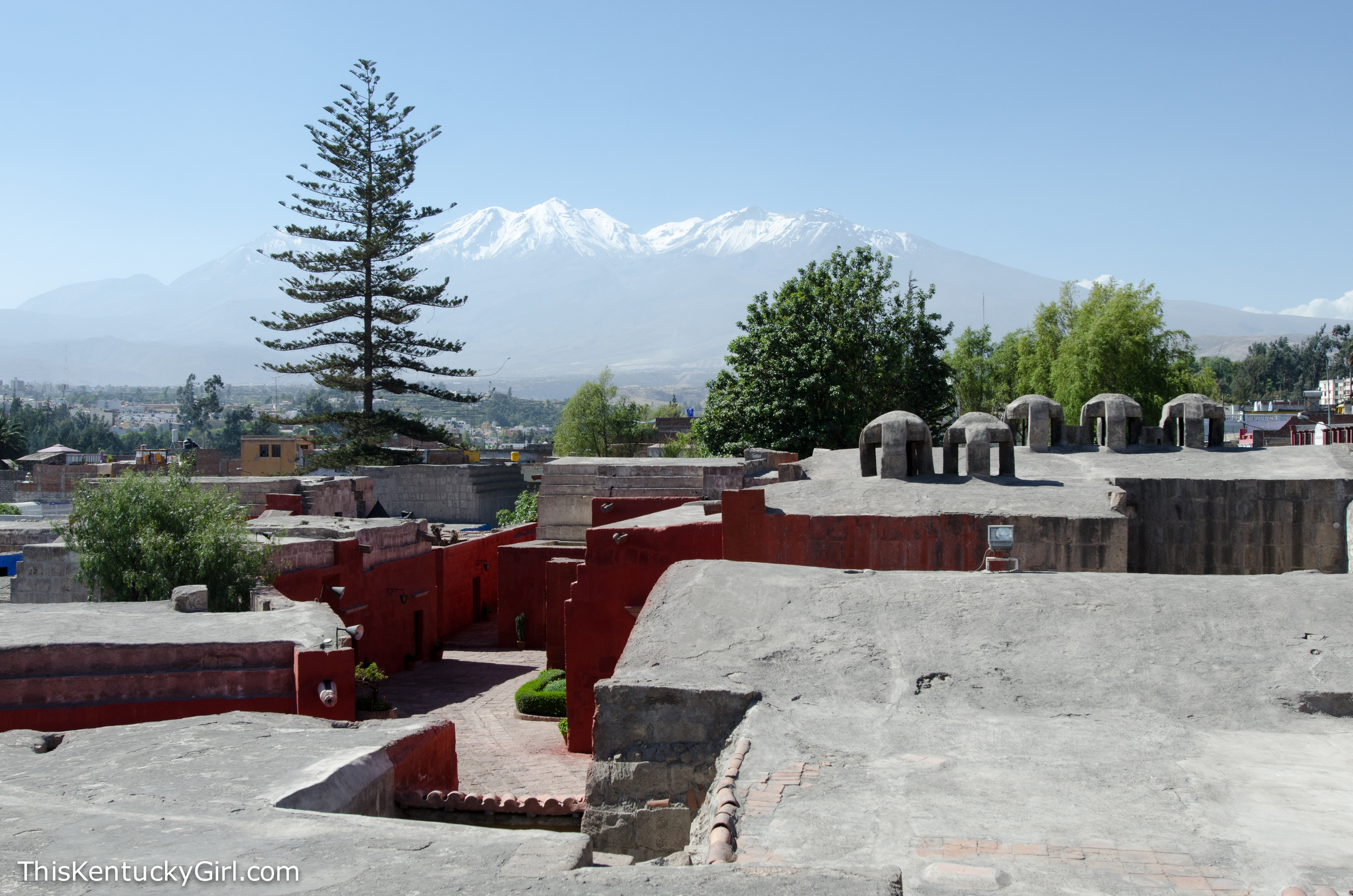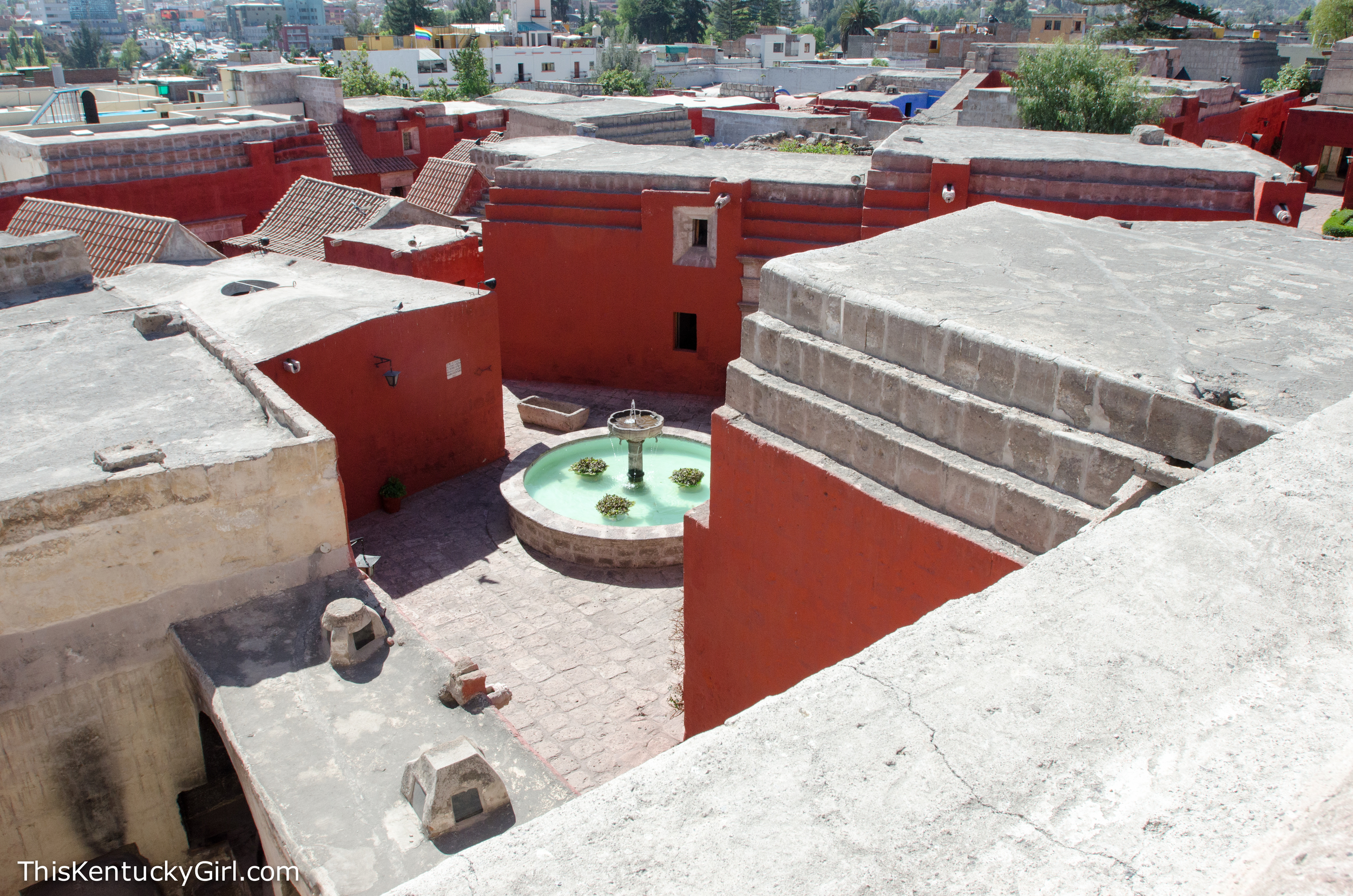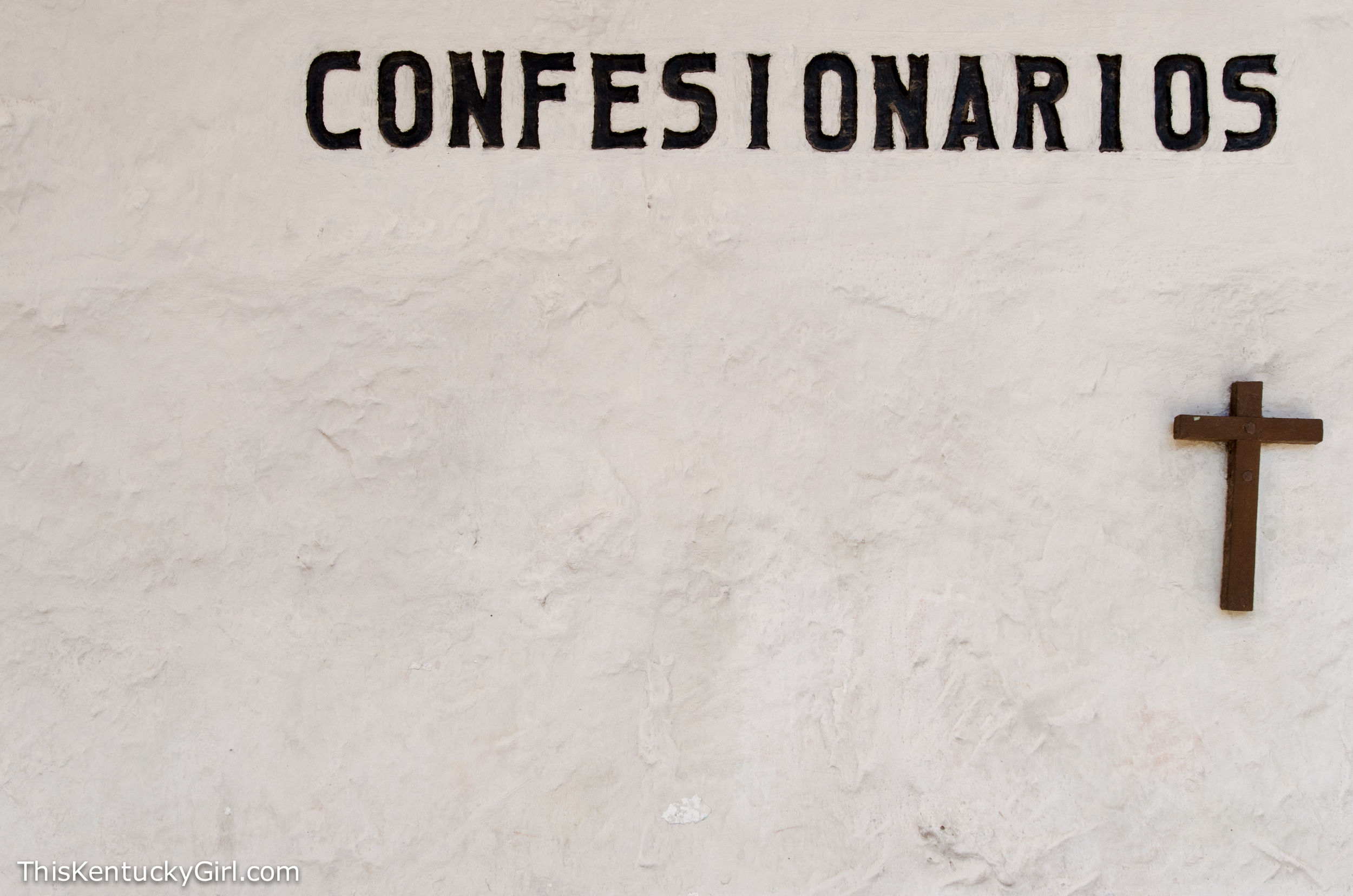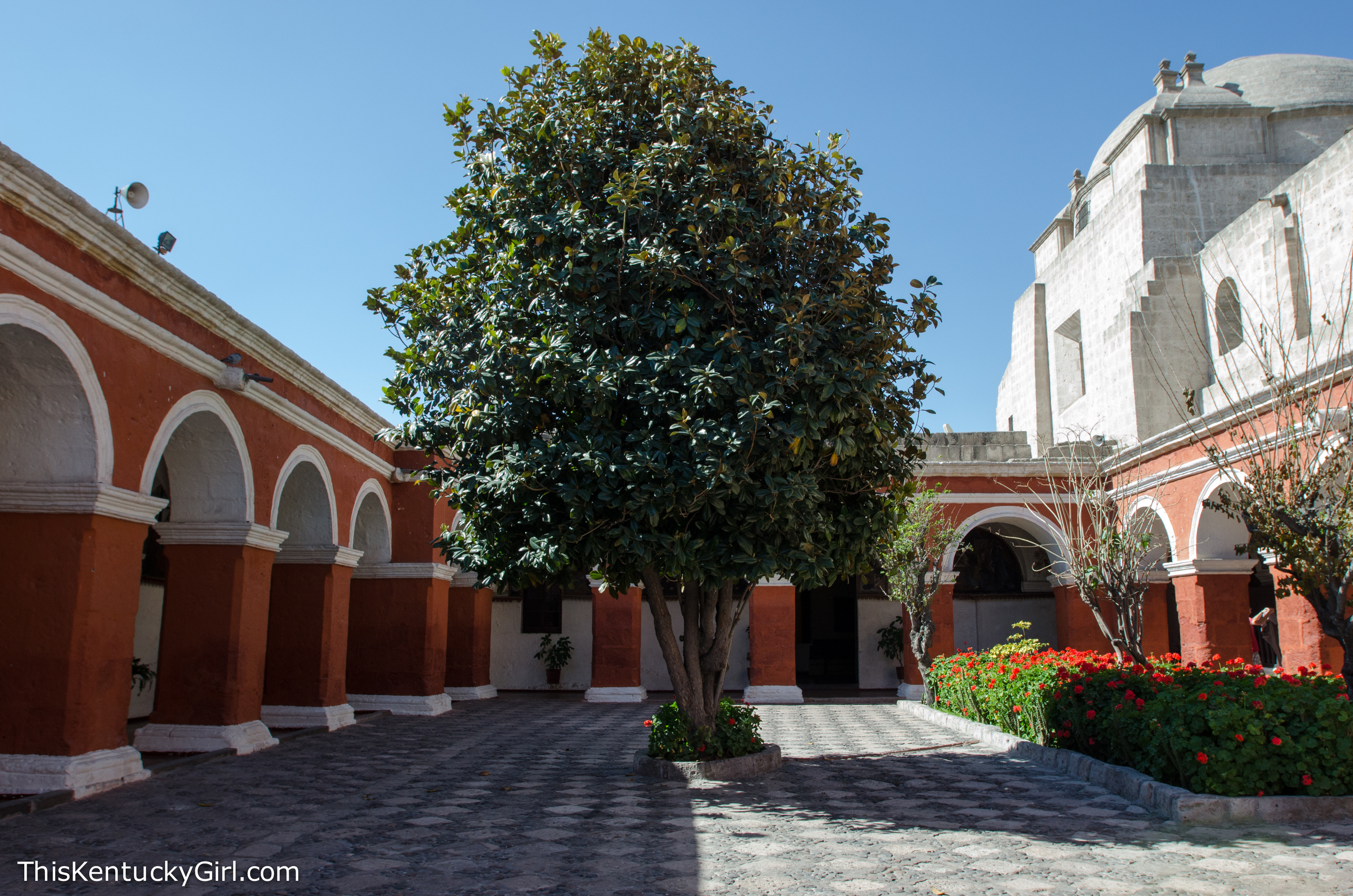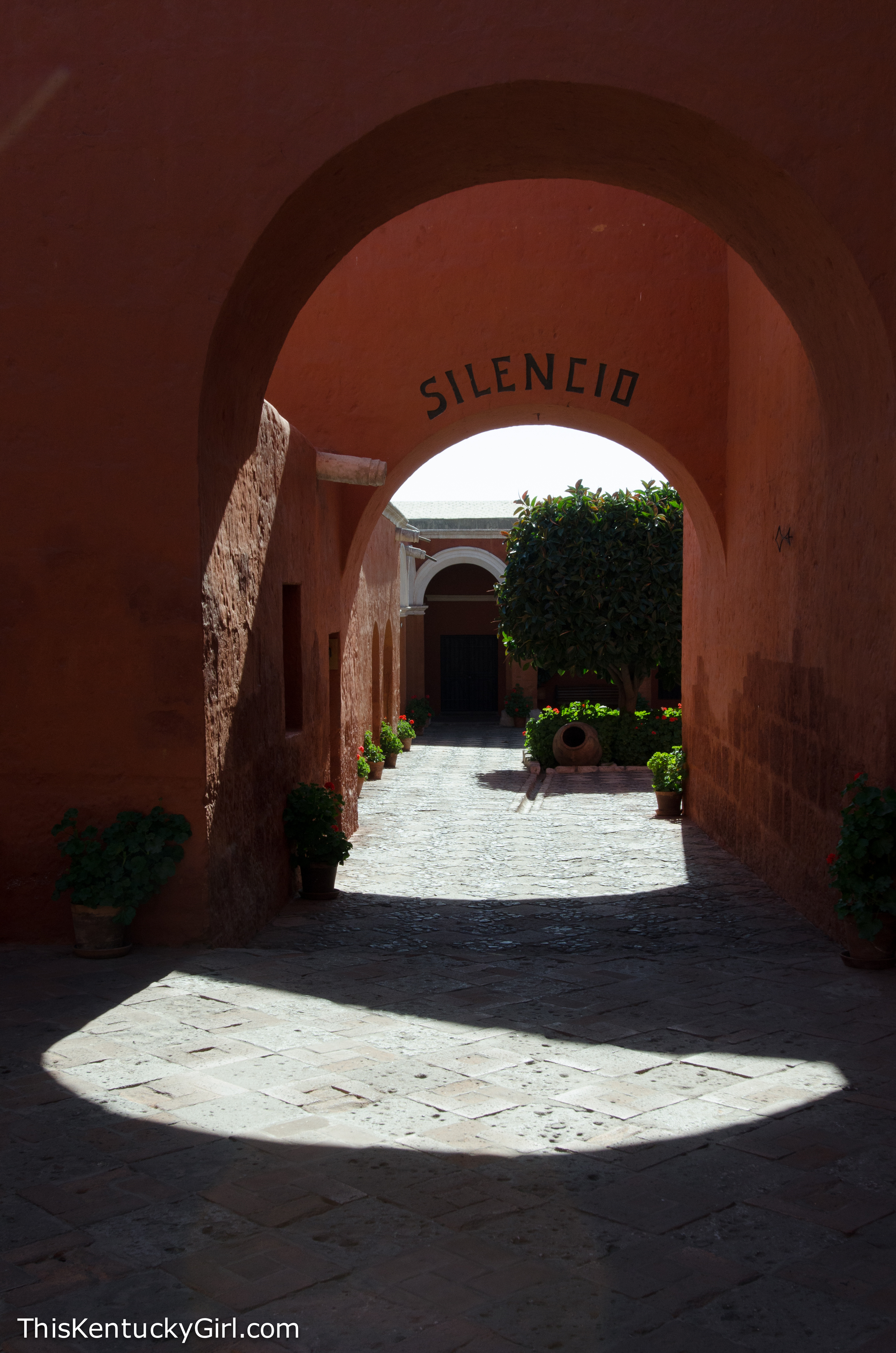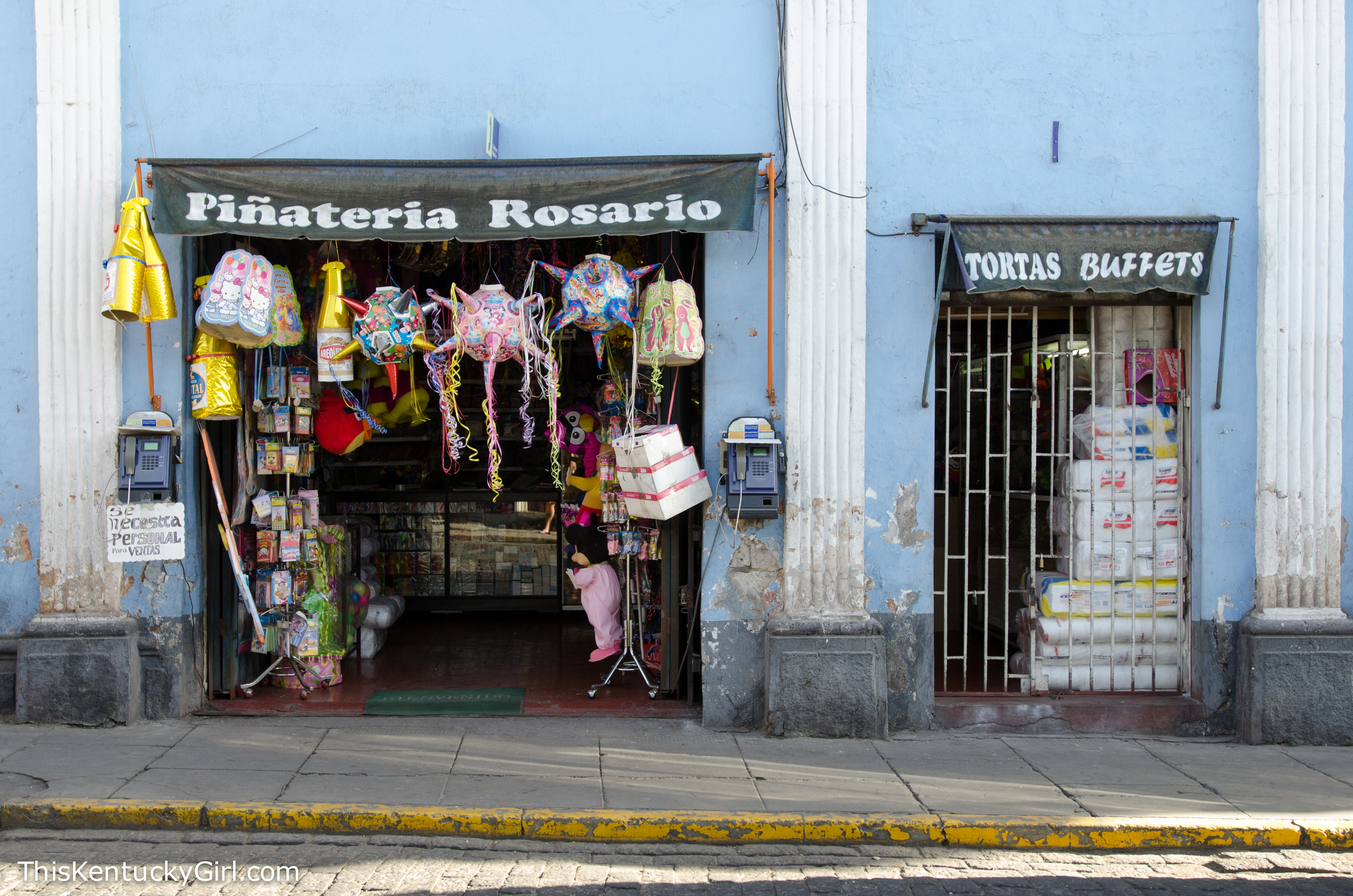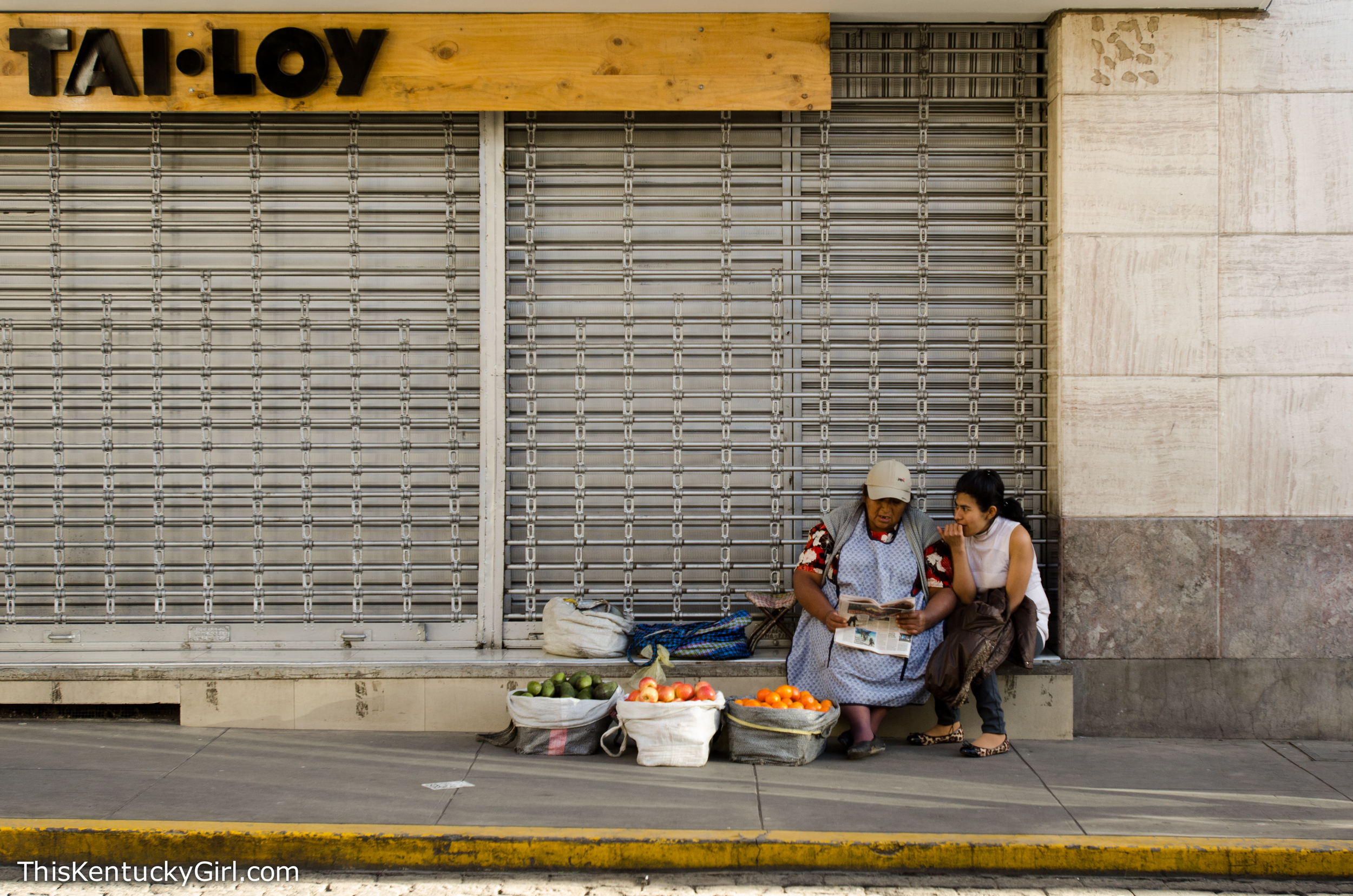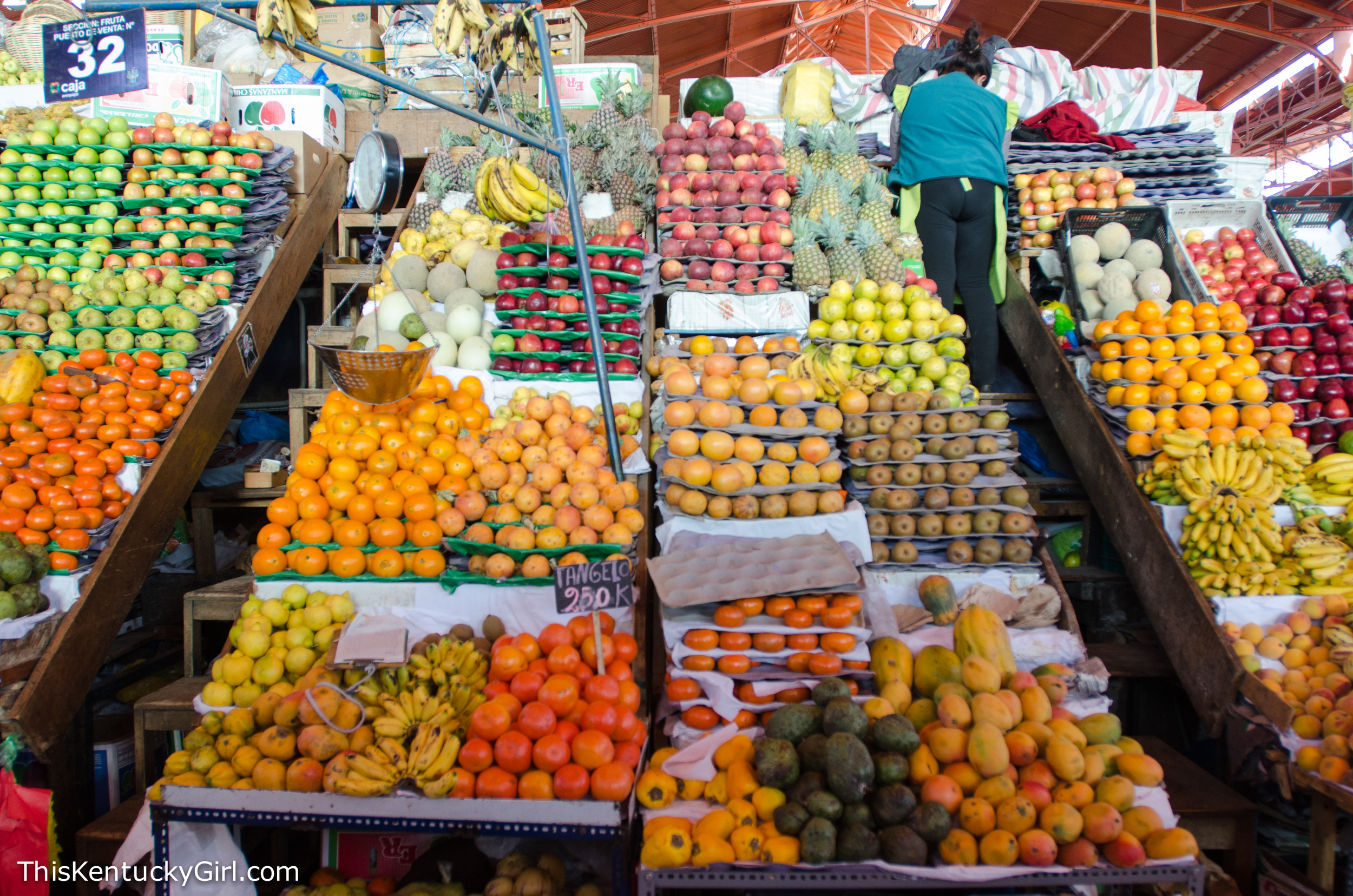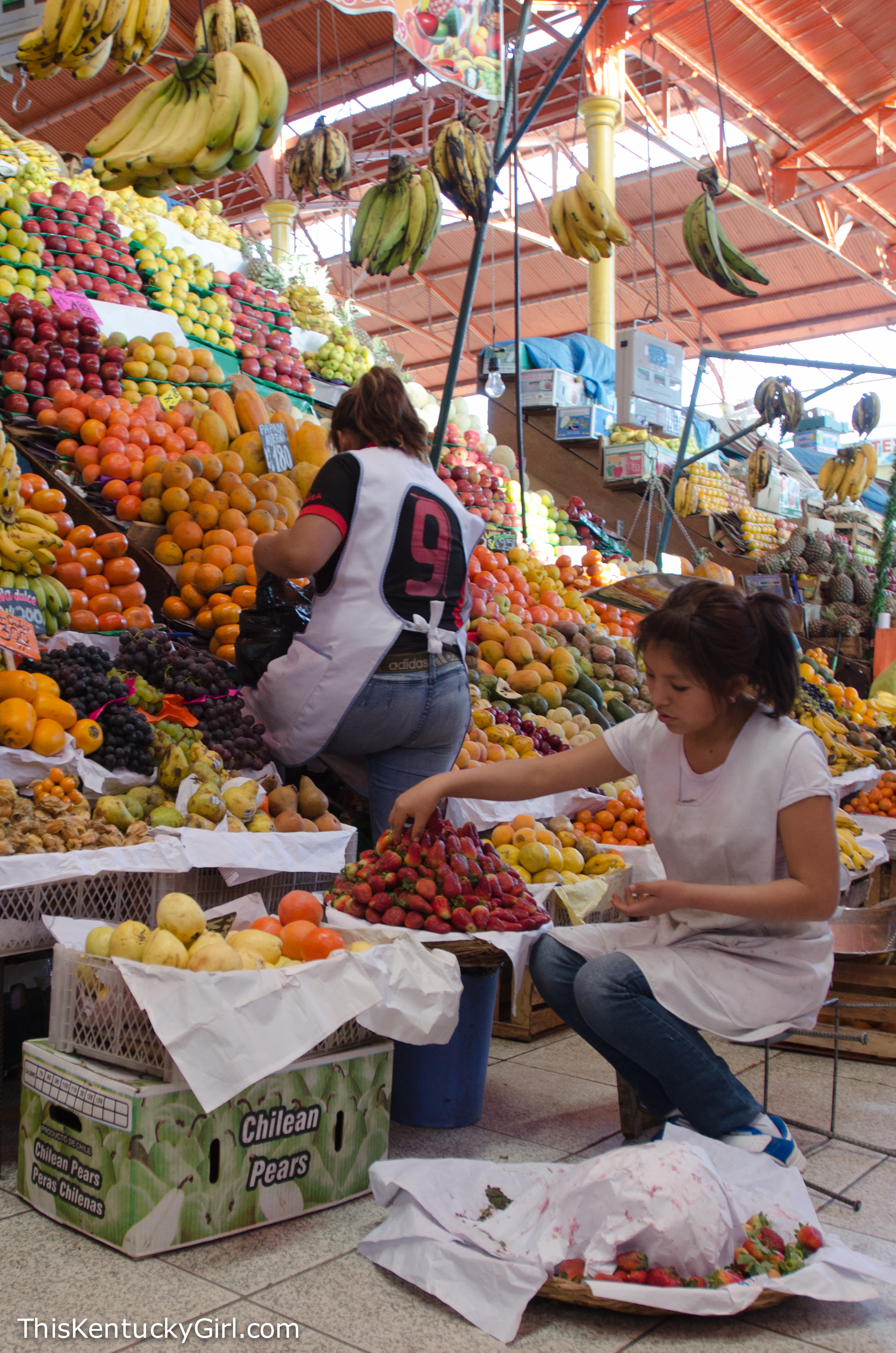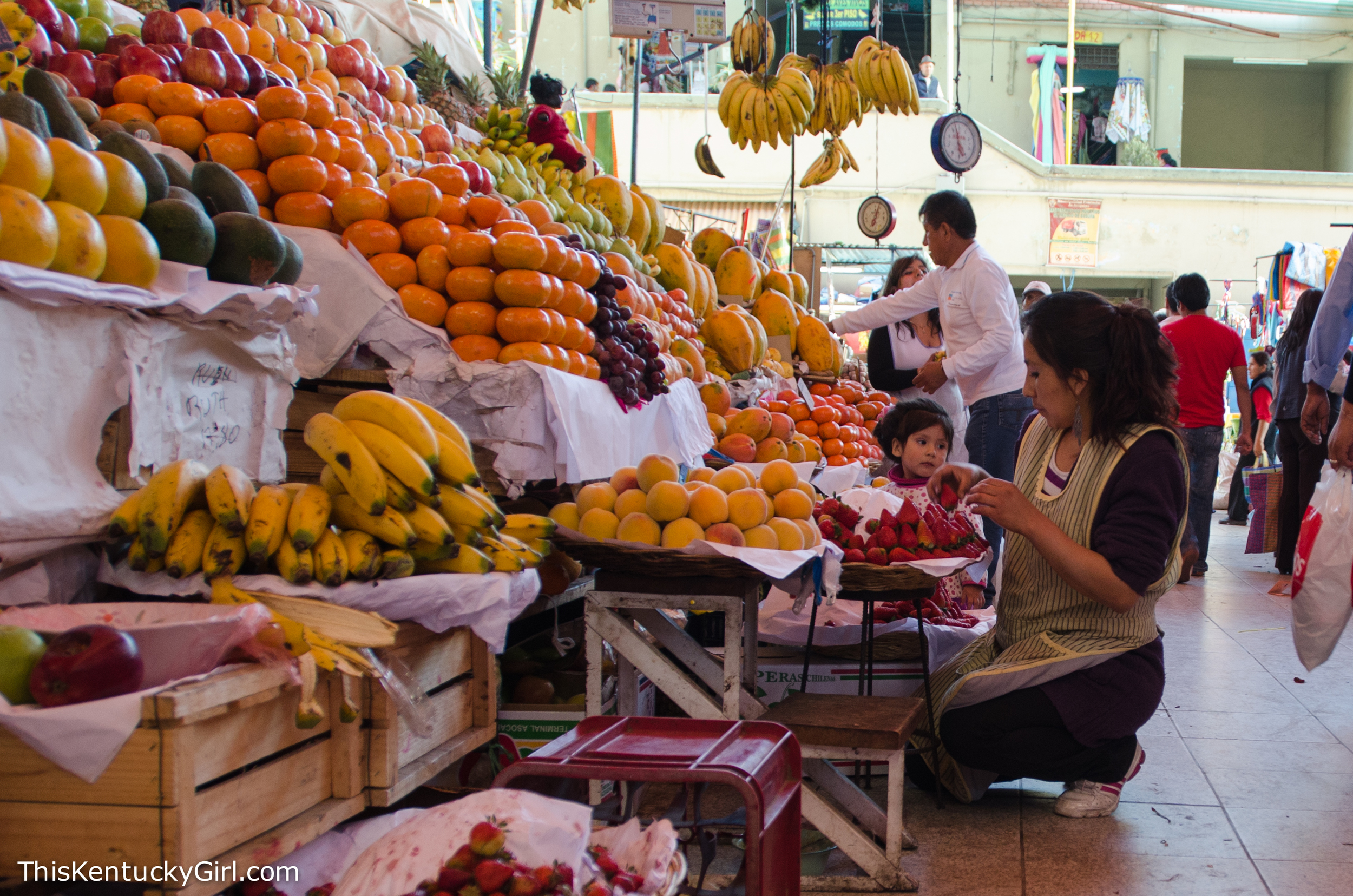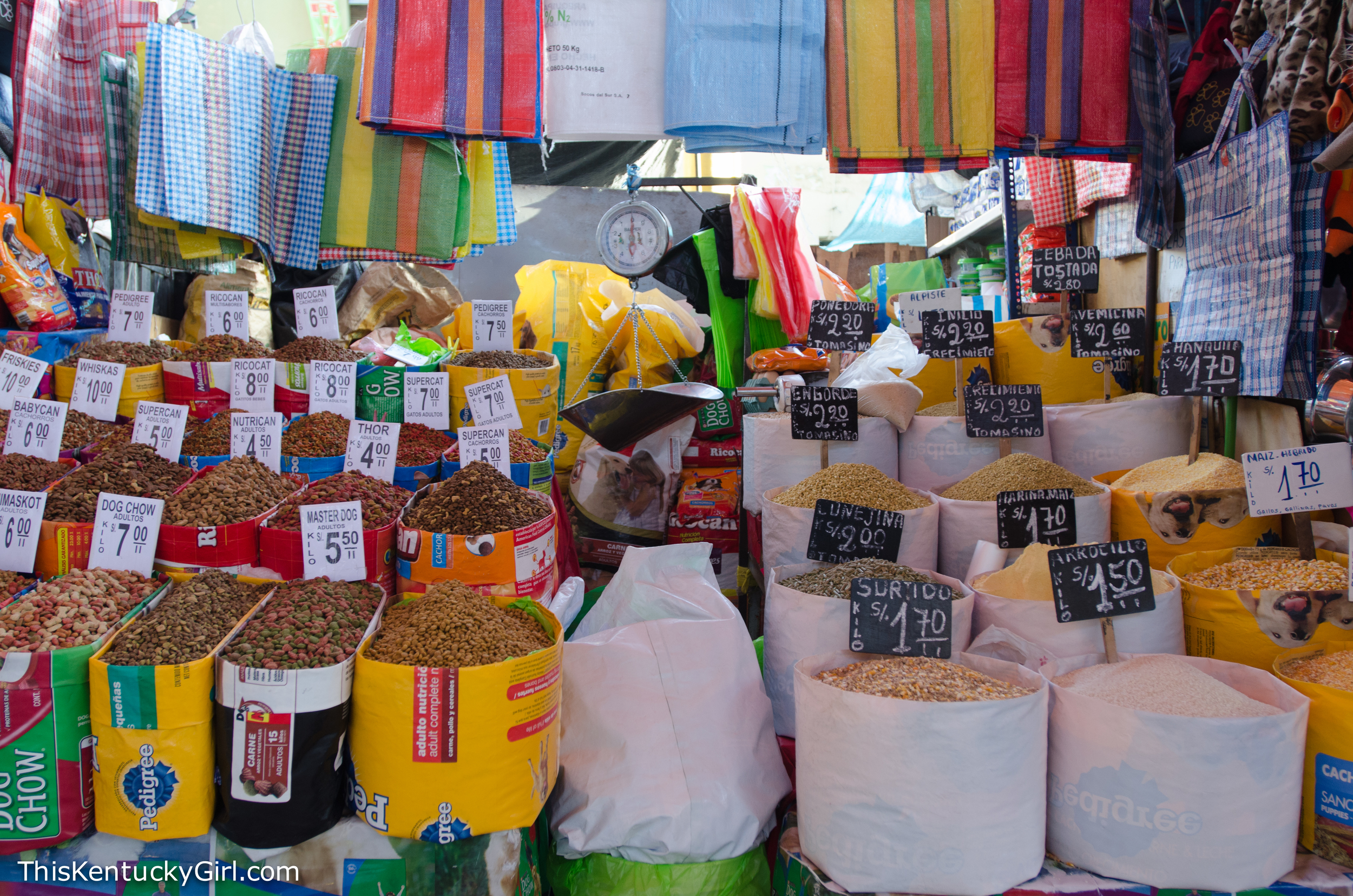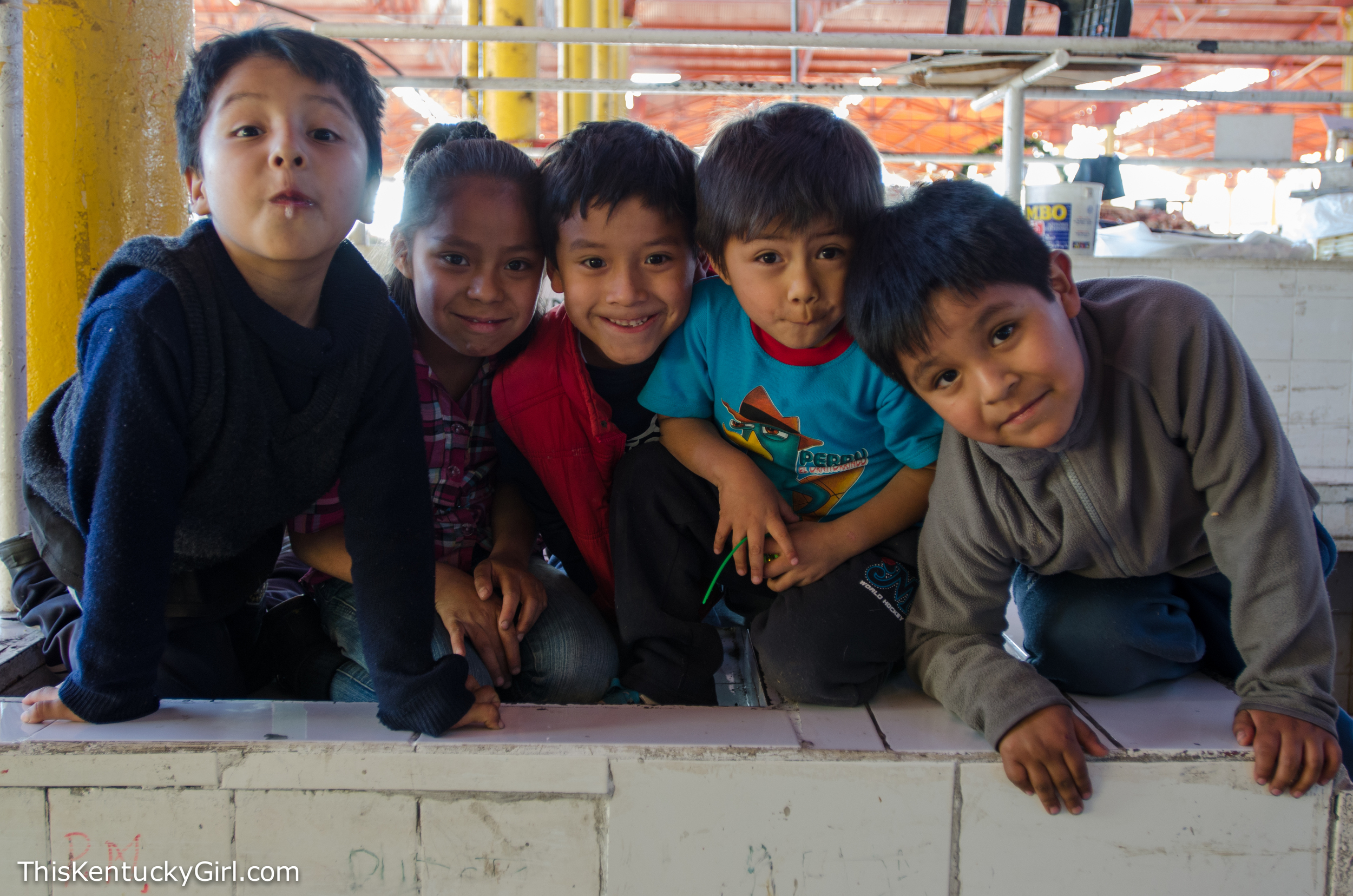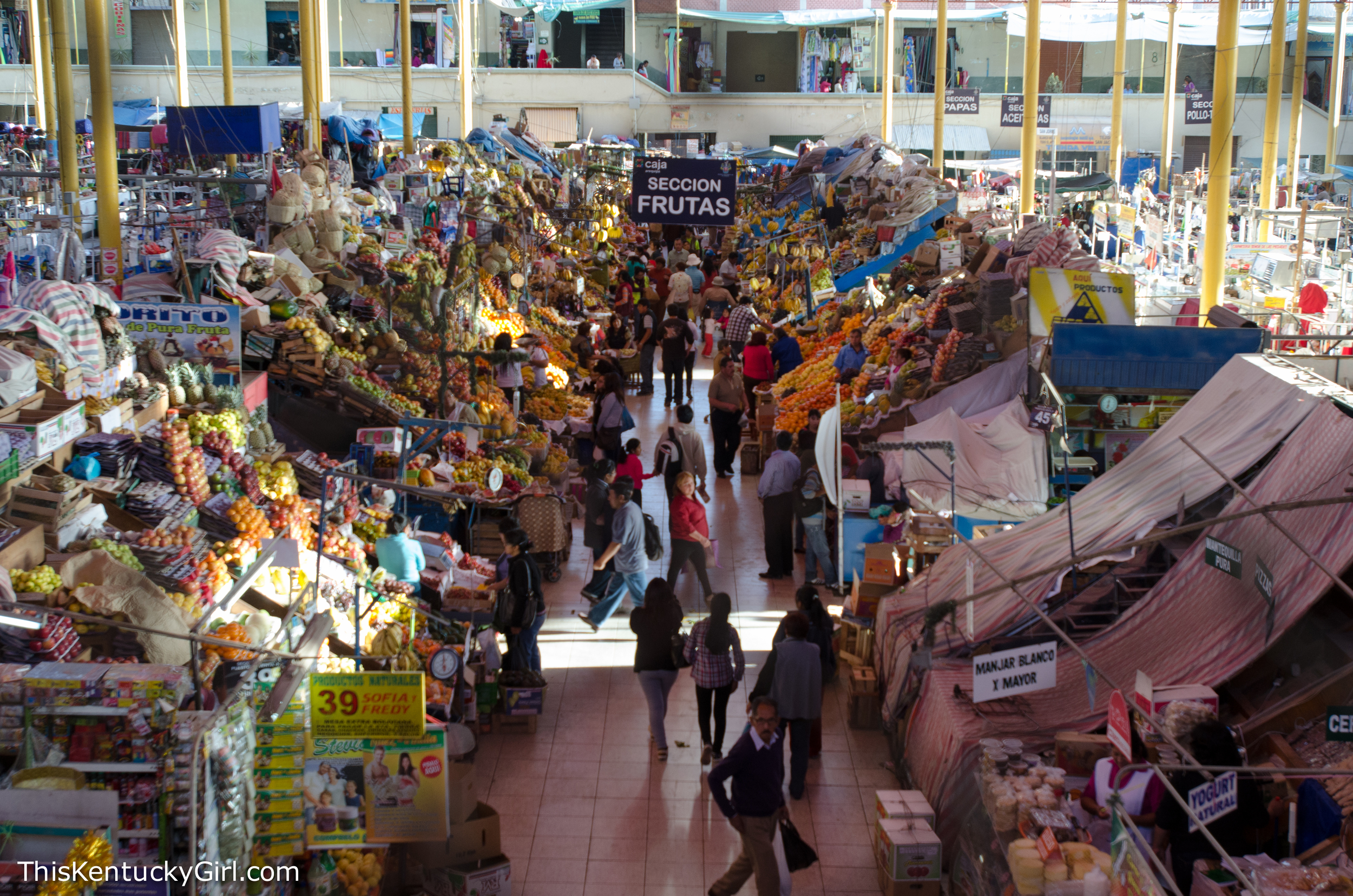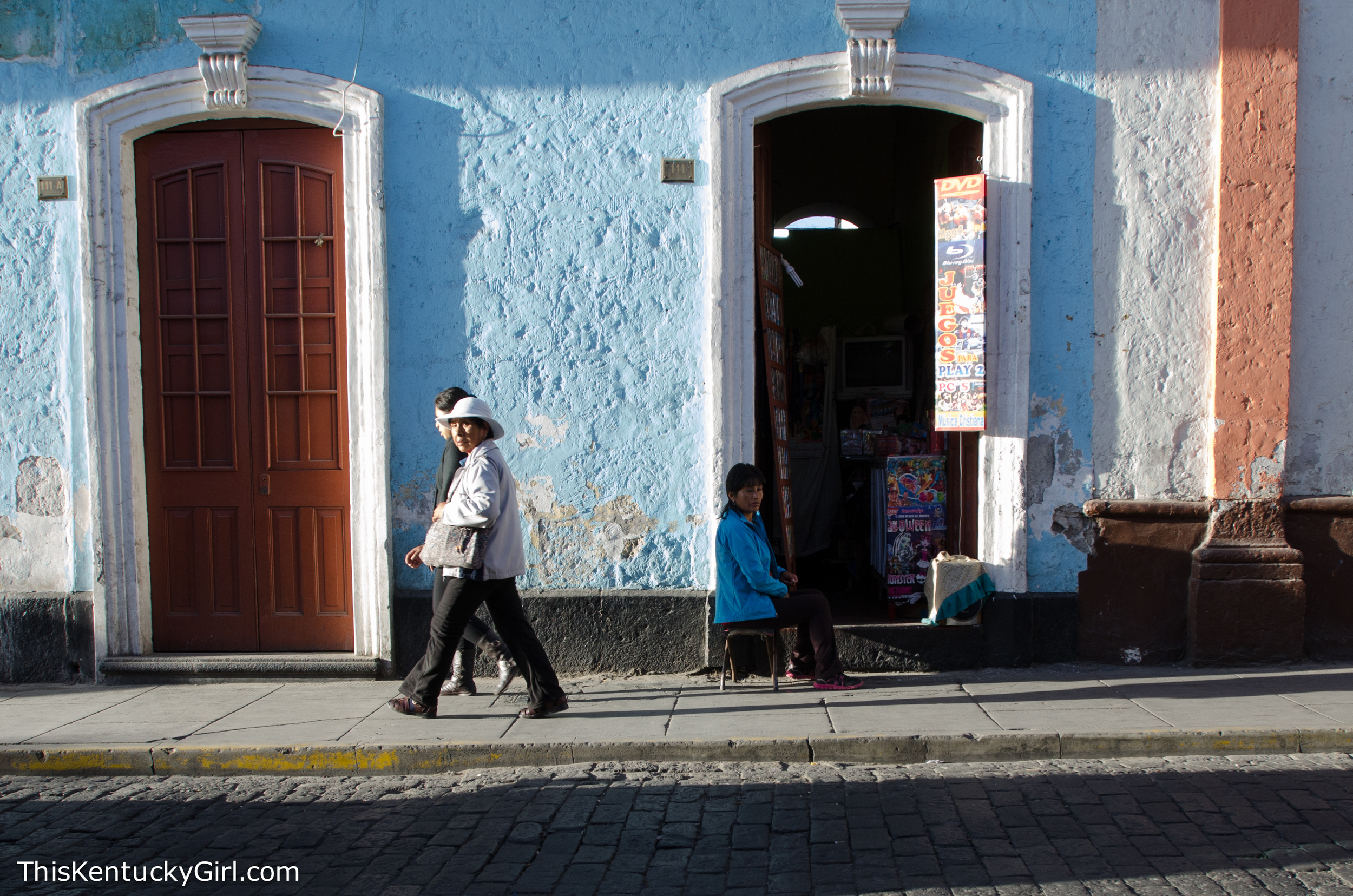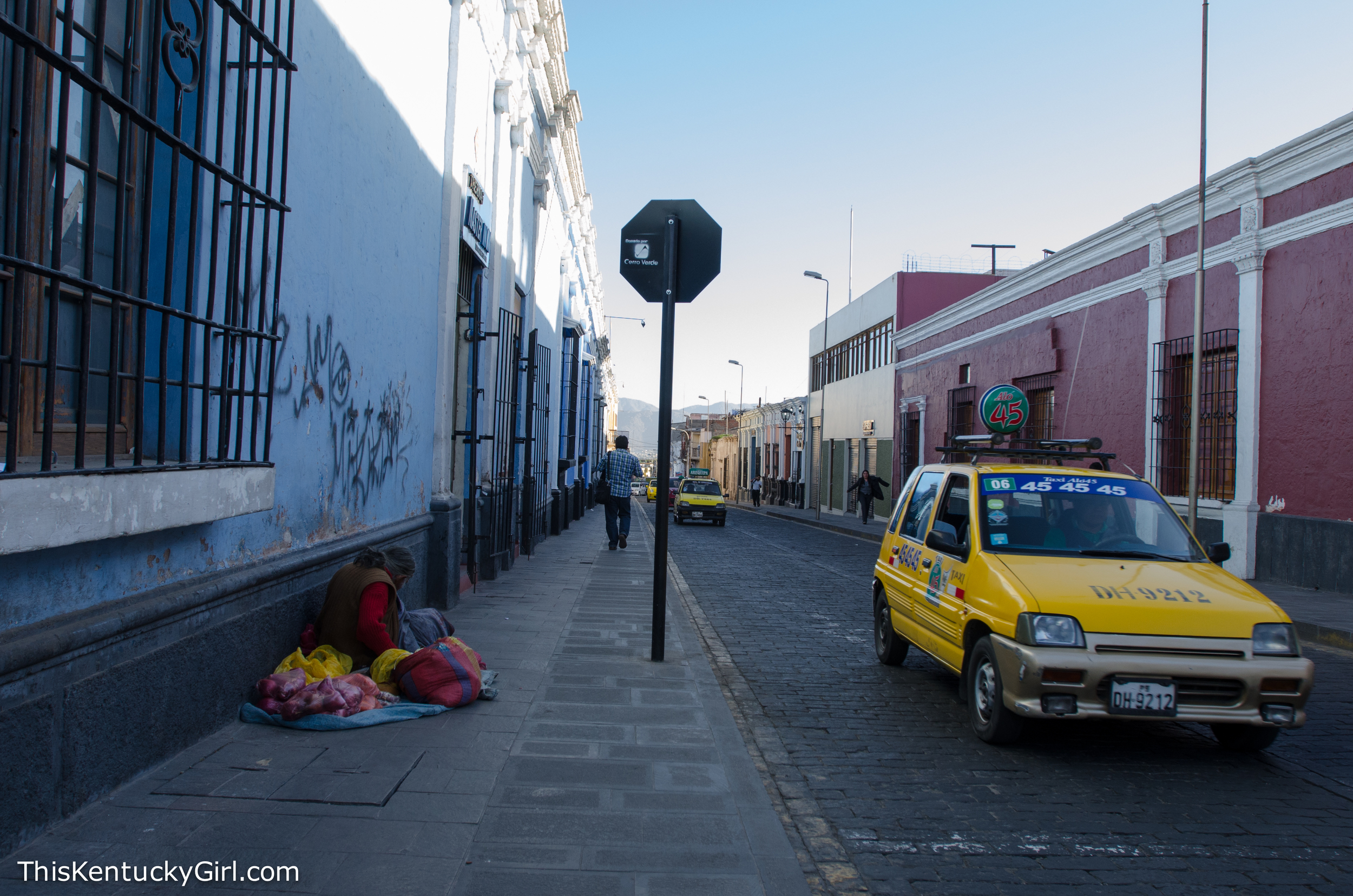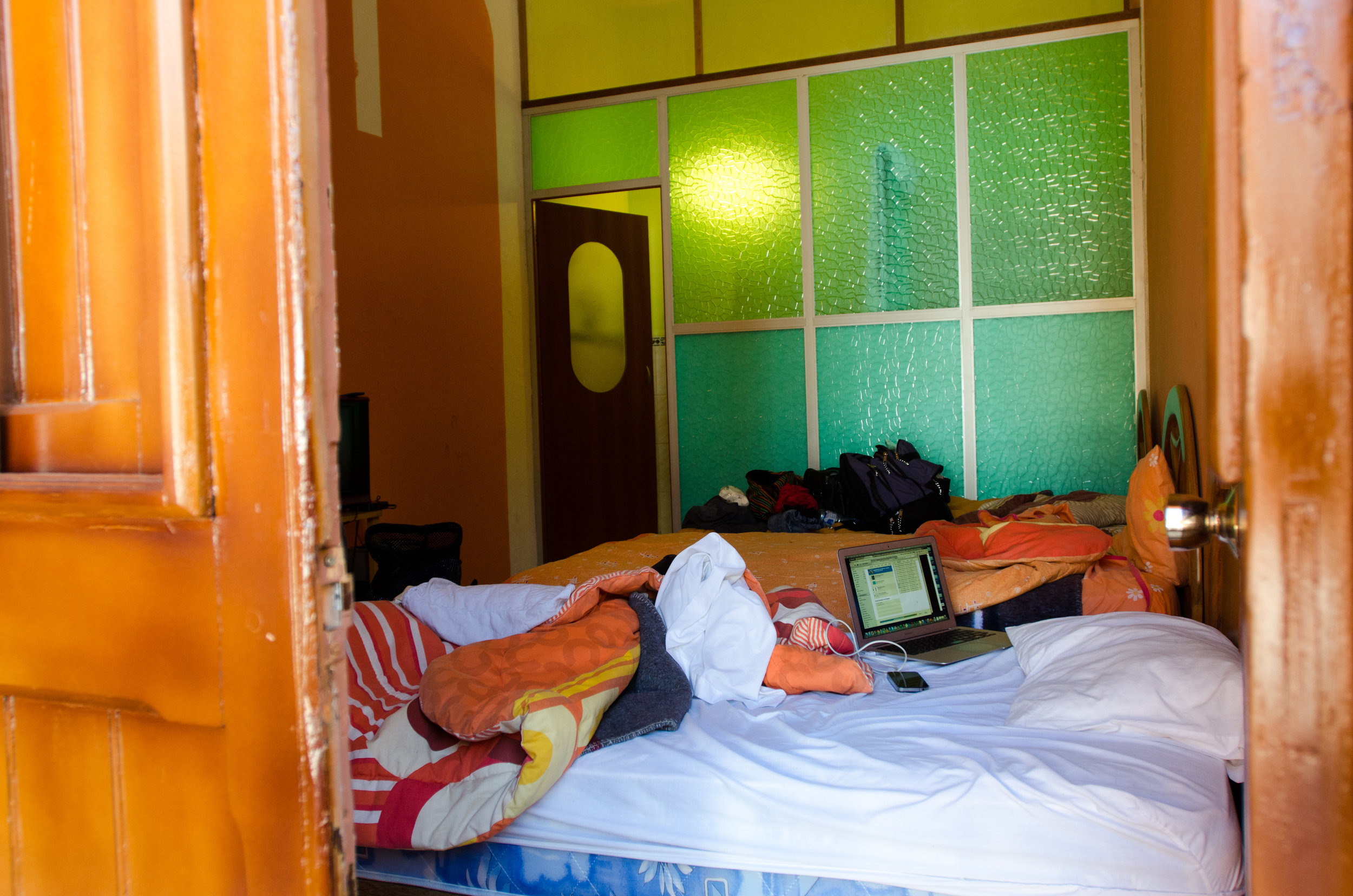The thing to do in Arequipa, is visit the Santa Catalina Monastery, originally built in 1579 for the Dominican Sisters. In a word, it’s huge. And beautiful. We read that back in the day, it was really prestigious to enter the monastery. Only women from upper class Spanish families could enter, granted their family paid a handsome dowry for their admission. According to Wikipedia, The dowry expected of a woman who wished to enter as a choir nun–indicated by wearing a black veil—and who thereby accepted the duty of the daily recitation of the Divine Office, was 2,400 silver coins, equivalent to about $150,000 (U.S.) today.
Can you even imagine that happening today?
Walking through the beautifully painted corridors and perfectly manicured courtyards, it was obvious that there had to have been a LOT of money circulating through to maintain the property. We stepped into a lot of cells and my mom wondered how many nuns lived in each cell, but I think it’s more likely that they each had their own individual cell- and often times, their own kitchen area as well!
Again, according to Wikipedia, In 1871 Sister Josefa Cadena, O.P., a strict Dominican nun, was sent by Pope Pius IX to reform the monastery. She sent the rich dowries back to Europe, and freed all the servants and slaves, giving them the choice of either remaining as nuns or leaving.
At its height,the monastery housed approximately 450 people (about a third of them nuns and the rest servants) in a cloistered community. In the 1960s, it was struck twice by earthquakes, severely damaging the structures, and forcing the nuns to build new accommodation next door.
Today, about 20 sisters live in a section of the monastery that is not available to the public.
As always, Andrew thinks that I won’t post pictures of him photo-bombing… I don’t know why he hasn’t learned yet. Maybe it’s because he not-so-secretly loves the attention? Momma is a much prettier model (below). I made her work it in the middle of the monastery, which made her giggle (a lot).
Some of the kitchens appeared to still be in use. I can’t imagine that they are, but lots of grass (or brush?) sat next to the fire pit and made you wonder why… It wasn’t made obvious (at least not to me) where the sisters who are living there currently were residing. Do they wander through the monastery when it’s not opened to the public? Do they use these older kitchens for fun? Do they sun themselves in these courtyards when no one else is around? I know I would!
My favorite part of the monastery was this bright orange section (for lack of another explanation). It was so bright and cheerful it almost felt like no other place we’ve been. The blue walls often remind me of the blue cities we’ve visited in India and Morocco, but orange is new and I love it!
At the far end of the monastery there was this pretty fountain lined with huge clay jars of some sort. I almost broke my camera and my foot stepping down to get a picture from the far side of the fountain. Andrew panicked. Luckily nothing (camera nor body part) was hurt!
Momma walked back the way we came. Can you see her sitting in front of the doorway above? Andrew and I walked around the fountain and saw another outdoor corridor to walk down. She was a little surprised when we hollered for her from behind the chain that separated us. Andrew collected her and the monastery sprawled on. At this point it almost felt like it was never-ending, but maybe we were just slow (not surprising) because we noticed one of the guides we denied upon entry was talking to her second group of tourists by this time.
In addition to many of the smaller individual kitchens, there was a huge communal kitchen with multiple fireplaces and one well. Below is what the same window/wall looked like from the outside. I wonder why most of the interiors weren’t painted?
You could see one of the volcanoes from the view from one of the roofs. And finally, after a few long rooms full of religious art, we were back where we started.
Walking around town, I became slightly enamored with the piñaterias lining the streets. An entire store devoted to piñatas! How awesome is that? Once we arrived in the main market, I could tell momma was a little bit squeamish at the smell of raw meat sitting on open tables. This was not a tourist market. This was a market for those who live in Arequipa. This was my kind of market. I tried to explain it to my mom. She was skeptical and antsy to get out of the meat aisle. The fruit aisle was more of her cup of tea (and absolutely beautiful). When she found a purse for a ridiculously cheap price, I think she came around.
Thank God for my go-go-gadget-arms to get this shot! We were on the second floor, but there was a high fence surrounding the walkway. I handed my camera over to Andrew to get this shot from above of my favorite aisle in the market. Frutas!
